
About UsThe Numismatic Bibliomania Society is a non-profit association devoted to the study and enjoyment of numismatic literature. For more information please see our web site at coinbooks.org SubscriptionsThose wishing to become new E-Sylum subscribers (or wishing to Unsubscribe) can go to the following web page link MembershipThere is a membership application available on the web site Membership Application To join, print the application and return it with your check to the address printed on the application. Print/Digital membership is $40 to addresses in the U.S., and $60 elsewhere. A digital-only membership is available for $25. For those without web access, write to: Charles Heck, Treasurer
AsylumFor Asylum mailing address changes and other membership questions, contact Terry at this email address: terrywhite5475@yahoo.com SubmissionsTo submit items for publication in The E-Sylum, write to the Editor at this address: whomren@gmail.com BUY THE BOOK BEFORE THE COIN |
- WAYNE'S WORDS: THE E-SYLUM MAY 26, 2019
- ASYLUM SUMMER 2019: 40TH ANNIVERSARY EDITION
- NBS SEEKS AUCTION DONATIONS
- NBS 2019 BOARD OF TRUSTEES CANDIDATES
- KRAUSE PUBLICATIONS LIBRARY BOOKS OFFERED
- HOWARD DANIEL OFFERS LITERATURE AT FIXED PRICES
- WORKMAN BOOKS ANNOUNCES JUNE 15, 2019 SALE
- HOWARD R. ENGEL ACQUIRES RICHARD STOCKLEY BOOKS
- NEW BOOK: POTOSI AND LIMA SPANISH COLONIAL COINS
- NEW BOOK: COINAGE OF THE RASHTRAKUTAS
- NEW BOOK: ANCIENT INDIAN COINS AND METALS
- THE BANKNOTE BOOK: AZERBAIJAN CHAPTER
- NEW BOOK: A BRIEF HISTORY OF DOOM
- 2019 IAPN BOOK PRIZES AWARDED
- ROGER DE WARDT LANE (1927-2013)
- EPNNES AWARDS 2019 NEWMAN GRANTS
- VIDEO: COLLECTORS HERBERT & MICHAEL SCHMIDT
- NOTES FROM E-SYLUM READERS: MAY 26, 2019
- THE ENDURING APPEAL OF THE LINCOLN CENT
- VOCABULARY TERM: CONCAVED EDGE
- CALVIN FRANK CLARKE (1872-1952)
- ISRAELI NUMISMATIST LEO KADMAN
- NUMISMATIC NUGGETS: MAY 26, 2019
- CELTIC COINS FOUND IN OLD COIN BOOK
- UTAH SPANISH COIN FIND: NEVERMIND
- D. W. VALENTINE PRESIDENTIAL MEDAL
- ASBURY PARK GOLD CERTIFICATES DISPUTED
- STAMPING TUBMAN'S FACE OVER ANDREW JACKSON'S
- TIMELESS LESSONS FROM OLD MONEY
- LOOSE CHANGE: MAY 26, 2019
- FEATURED WEB PAGE: 1830-31 POLISH REVOLUTION
Click here to access the complete archive a
Click here to unsubscribe (scroll down)
To comment or submit articles, reply to whomren@gmail.com
Content presented in The E-Sylum is not necessarily researched or independently fact-checked, and views expressed do not necessarily represent those of the Numismatic Bibliomania Society.
WAYNE'S WORDS: THE E-SYLUM MAY 26, 2019
 New subscribers this week include: Rodney Bobak, courtesy of Bob Crooks; and Paul C McGee. Welcome aboard! We now have 5,925
subscribers.
New subscribers this week include: Rodney Bobak, courtesy of Bob Crooks; and Paul C McGee. Welcome aboard! We now have 5,925
subscribers.
Thank you for reading The E-Sylum. If you enjoy it, please send me the email addresses of friends you think may enjoy it as well and I'll send them a subscription (but let me know if they are located in the European Union). Contact me at whomren@gmail.com anytime regarding your subscription, or questions, comments or suggestions about our content.
This week we open with three articles pertaining to our sponsor organization, the Numismatic Bibliomania Society. Next up are three literature sales and a new owner for Canada's Richard Stockley Books. Next up are FIVE new books and the 2019 IAPN Book Prize.
Other topics this week include the 2019 Newman Grants, Notes from E-Sylum readers, the Lincoln Cent (including the 1959-D wheat cent), concaved edges, dealer C. F. Clarke, Israeli numismatist Leo Kadman, gold certificates, and Harriet Tubman notes.
To learn more about chopmarks, the coins of Ecuador, the banknotes of Azerbaijan, California clam money, the ANA Ex-President Medal, ABC Pesos,
Equi-Nox One Hour currency, D. W. Valentine, sand the polygamous numismatist, read on. Have a great week, everyone!
Wayne Homren
Editor, The E-Sylum

ASYLUM SUMMER 2019: 40TH ANNIVERSARY EDITION
The Numismatic Bibliomania Society (NBS) is in its 40th year, and Asylum editor Maria Fanning has prepared a colossal special issue. Here's an overview, along with Tom Harrison's President's Message outlining upcoming society events. -Editor
Thanks to all NBS members who contributed to this special 96-page issue!
• Message from NBS President Tom Harrison;
• NBS Board of Trustees Slate of Candidates and Election Ballot;
• The Asylum Awards Ballot;
• Reminiscences from dozens of past and present NBS members;
• Remembrances of NBS charter members and numismatic bibliophiles past;
• NBS awards 1986-2018;
• Photos throughout the years provided by our own NBS historian Joel Orosz;
• NBS General Meeting and Symposium at the ANA's World's Fair of Money.
Remember, while The E-Sylum is free to all, only paid members of the Numismatic Bibliomania Society receive our print journal, The Asylum. Print/Digital membership is $40 to addresses in the U.S., and $60 elsewhere. A digital-only membership is available for $25. -Editor
To join NBS or renew your annual membership, see:
http://www.coinbooks.org/about/membership.html
Message from the President
 Welcome to this memorable edition of The Asylum that celebrates the 40th anniversary of the NBS. This issue provides an
opportunity to look back and enjoy memories about many of the personalities, organized events and informal social gatherings from over the past four
decades. I would like to share a word of gratitude to our contributing authors and Editor Maria Fanning for bringing our commemorative issue to
fruition. Your efforts have made this special anniversary issue truly special.
Welcome to this memorable edition of The Asylum that celebrates the 40th anniversary of the NBS. This issue provides an
opportunity to look back and enjoy memories about many of the personalities, organized events and informal social gatherings from over the past four
decades. I would like to share a word of gratitude to our contributing authors and Editor Maria Fanning for bringing our commemorative issue to
fruition. Your efforts have made this special anniversary issue truly special.
Planning is underway for our NBS events at this year's ANA World's Fair of Money in Rosemont. I am pleased to announce that the ANS Deputy Director, Gilles Bransbourg, will be speaking at this year's Symposium on Thursday, August 15th at 1:00. In addition, we are delighted to have NBS Vice President Len Augsburger giving a presentation on the first six issues of The Numismatist.
On Friday at 11:30 our General Meeting will include the announcement of The Asylum author award winners. We are looking forward to Len Augsburger and Wayne Homren reporting on the Newman Numismatic Portal and The E-Sylum respectively. The meeting will also feature our annual benefit auction. A special thank you to our generous members who are donating items and our loyal bidders who continue to support the NBS.
Again this year we will be hosting the NBS club table near literature dealers, Charles Davis and Kolbe & Fanning. At the table we will be displaying a variety of items from Friday's benefit auction. Also for a $25 donation to the NBS, you will receive a commemorative 40th Anniversary coffee mug. We hope everyone will have a chance to stop by the table and share your thoughts and suggestions for the betterment of the NBS.
On behalf of the membership, I would like to offer a heartfelt thank you to our outgoing treasurer, Terry White, for his diligent service to the NBS. Chuck Heck has graciously stepped forward to assume the treasurer's position. We are also indebted to Chuck for taking the reins and securing our new 501(c)(3) tax deductible status. We certainly appreciate both of these members' service to this vital position.
Until we meet in Rosemont, may your numismatic library provide investigation, discovery and most of all, enjoyment.

NBS SEEKS AUCTION DONATIONS
NBS Vice President Len Augsburger submitted this request for donations to the 2019 annual fundraising auction. It's always a fun event and important to the finances of our group. -Editor
NBS is accepting donations of numismatic literature for the annual auction to be held at the NBS general meeting at the ANA convention. We've received a few nice things so far and are grateful for those who have donated. David Fanning will produce a catalog for the sale, which will acknowledge all donors. Material may be sent to David Fanning, 141 W. Johnstown Road, Gahanna OH, 43230.
Please consider parting with an interesting piece of numismatic literature or ephemera. Or get creative, like "How much am I bid to make your name here jump over a big stack of old Redbooks Evel Kneivel style?" Or not. Maybe just donate a book to be safe... -Editor
NBS 2019 BOARD OF TRUSTEES CANDIDATES
It's also time for NBS members to elect the Board of Trustees. Here are the candidate bios from the latest issue of The Asylum. -Editor
NBS 2019 Board of Trustees Slate of Candidates
2019 is an election year for the Numismatic Bibliomania Society's Board of Trustees. Active NBS members will receive a ballot in the next issue and a link to vote online.
PRESIDENT
 Tom Harrison, current president
Tom Harrison, current president
It has been my privilege to serve as President of the NBS the past two years. I started collecting numismatic literature in the late 1970s when a
groundswell of excitement was building for this long neglected branch of numismatics. In 2008, following nearly a twenty year hiatus from the hobby,
I returned with a renewed enthusiasm. I look forward to working with the Board and the entire NBS membership as we continue to explore ways to
increase enthusiasm and share our passion for numismatic literature with the greater numismatic community.
VICE PRESIDENT
Len Augsburger, current vice president
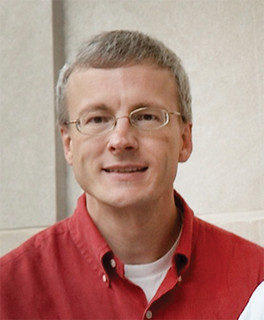 Len Augsburger serves as Project Coordinator for the Newman Numismatic Portal at Washington University in St. Louis, and has written widely
in the field of American numismatics. He has won two Book of the Year awards from the Numismatic Literary Guild, and recently published, with
co-authors Joel Orosz and Pete Smith, 1792: Birth of a Nation's Coinage. In conjunction with this work, Augsburger cataloged the Donald
Partrick collection of patterns of 1792 sold by Heritage Auctions in 2015. A Fellow of the American Numismatic Society, Augsburger also serves as
vice president of the Liberty Seated Collectors Club.
Len Augsburger serves as Project Coordinator for the Newman Numismatic Portal at Washington University in St. Louis, and has written widely
in the field of American numismatics. He has won two Book of the Year awards from the Numismatic Literary Guild, and recently published, with
co-authors Joel Orosz and Pete Smith, 1792: Birth of a Nation's Coinage. In conjunction with this work, Augsburger cataloged the Donald
Partrick collection of patterns of 1792 sold by Heritage Auctions in 2015. A Fellow of the American Numismatic Society, Augsburger also serves as
vice president of the Liberty Seated Collectors Club.
SECRETARY/TREASURER
Chuck Heck, current acting treasurer
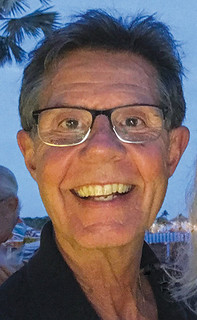 My name is Charles Heck, but everyone knows me as Chuck. My interest in early U.S. history and early U.S. coinage began at age 6. My mom
and dad would take my brother and me to Lake George for two weeks every August and I thrived on the local history. At age 8 my dad gave me his
boyhood coin collection and that sealed my addiction to numismatics.
My name is Charles Heck, but everyone knows me as Chuck. My interest in early U.S. history and early U.S. coinage began at age 6. My mom
and dad would take my brother and me to Lake George for two weeks every August and I thrived on the local history. At age 8 my dad gave me his
boyhood coin collection and that sealed my addiction to numismatics.
I cannot believe how a hobby has enabled me to meet so many talented, interesting, and friendly people. And now as I get older, I find that the people and the stories mean more to me than the coins. What a great ride this has been!
Professionally, I am a C.P.A., licensed in the State of New York. My areas of specialization are Corporate and Personal Taxation, Non Profit Accounting, and Estates and Trusts. NBS is a 501(c)(3) not for profit corporation that has been determined by the IRS to qualify as a Public Charity. I understand the rules that Public Charities, Private Operating Foundations and Private Non-Operating Foundations must follow. I also know how to prepare and interpret financial information. I know that I can serve NBS well as its Treasurer.
TRUSTEES (Vote for Six)
David F. Fanning, current trustee
 David F. Fanning is a principal of Kolbe & Fanning Numismatic Booksellers, an auction and retail firm located in the Columbus, Ohio
area. A student of numismatic literature since childhood, he holds a Ph.D. in English from the Ohio State University and is a life member of the ANA.
He is an elected Fellow of the ANS and a Board Member of the Numismatic Bibliomania Society, in addition to being a member of the Rittenhouse Society
and a founder of the Attinelli Fellowship. He has published widely on numismatic literature, North American colonial coins, medals, U.S. federal
coins, Islamic coins and other topics.
David F. Fanning is a principal of Kolbe & Fanning Numismatic Booksellers, an auction and retail firm located in the Columbus, Ohio
area. A student of numismatic literature since childhood, he holds a Ph.D. in English from the Ohio State University and is a life member of the ANA.
He is an elected Fellow of the ANS and a Board Member of the Numismatic Bibliomania Society, in addition to being a member of the Rittenhouse Society
and a founder of the Attinelli Fellowship. He has published widely on numismatic literature, North American colonial coins, medals, U.S. federal
coins, Islamic coins and other topics.
Dan Hamelberg, current trustee
 Dan Hamelberg is a current ANS Trustee, an ANA & ANS Life Member, a Member EAC, FUN, LSCC, C4, Flying Eagle & Indian Cent
Collectors Society. He is also a past NBS President and has been a board member for many years, as well as receiving the NBS's George F. Kolbe Award
for Lifetime Achievement Numismatic Literature. He has assembled a significant U.S. Coin collection of "First Year of Type" and a comprehensive
collection of U.S. Numismatic Literature.
Dan Hamelberg is a current ANS Trustee, an ANA & ANS Life Member, a Member EAC, FUN, LSCC, C4, Flying Eagle & Indian Cent
Collectors Society. He is also a past NBS President and has been a board member for many years, as well as receiving the NBS's George F. Kolbe Award
for Lifetime Achievement Numismatic Literature. He has assembled a significant U.S. Coin collection of "First Year of Type" and a comprehensive
collection of U.S. Numismatic Literature.
"I would like to see more engagement with young collectors as they are the future of our hobby. The NBS needs and deserves an active board of directors with officers to match to maintain and improve a society devoted to the hobby of Numismatic Literature."
David Hill, current trustee
 David Hill is the Librarian and Archivist at the American Numismatic Society, and he also oversees the satellite operation of the Newman
Numismatic Portal that is based there. He has over twenty-five years of experience working with books and archival materials, having held positions
at the Columbia University Archives and Columbiana Library, the Berkshire County Historical Society (Massachusetts), the Westchester County Archives,
and Iona College Library (New Rochelle, N.Y.). He has been with the ANS since 2010. His numerous articles on numismatics and numismatic literature
have appeared in ANS Magazine and The Asylum.
David Hill is the Librarian and Archivist at the American Numismatic Society, and he also oversees the satellite operation of the Newman
Numismatic Portal that is based there. He has over twenty-five years of experience working with books and archival materials, having held positions
at the Columbia University Archives and Columbiana Library, the Berkshire County Historical Society (Massachusetts), the Westchester County Archives,
and Iona College Library (New Rochelle, N.Y.). He has been with the ANS since 2010. His numerous articles on numismatics and numismatic literature
have appeared in ANS Magazine and The Asylum.
Sydney Martin, current trustee
 I currently serve as President of the American Numismatic Society. I was the editor of the award-winning Colonial Coin Collectors
Club (C4) Newsletter for over 10 years (retiring in 2016). I believe in the adage "buy the book first," and have built an extensive numismatic
library. My primary collecting interest is in pre-Federal coinage and colonial medals, and I have authored three books dealing with these topics. I
am a member of ANS, NBS, MCA, C4, TAMS, EAC, and ANA.
I currently serve as President of the American Numismatic Society. I was the editor of the award-winning Colonial Coin Collectors
Club (C4) Newsletter for over 10 years (retiring in 2016). I believe in the adage "buy the book first," and have built an extensive numismatic
library. My primary collecting interest is in pre-Federal coinage and colonial medals, and I have authored three books dealing with these topics. I
am a member of ANS, NBS, MCA, C4, TAMS, EAC, and ANA.
W. David Perkins, current trustee
 W. David Perkins is a longtime collector and researcher of the early United States silver dollars 1794-1803. Dave also collects Civil War
Store Cards, tokens and Numismatic Literature, including books, catalogs and documents pertaining to the great early silver dollar collections and
collectors. His interest in Civil War Store Cards started with a discovery that his great-great-grandfather issued two Detroit, Michigan Civil War
tokens in 1863.
W. David Perkins is a longtime collector and researcher of the early United States silver dollars 1794-1803. Dave also collects Civil War
Store Cards, tokens and Numismatic Literature, including books, catalogs and documents pertaining to the great early silver dollar collections and
collectors. His interest in Civil War Store Cards started with a discovery that his great-great-grandfather issued two Detroit, Michigan Civil War
tokens in 1863.
Dave was a consultant to Bowers & Merena in the cataloging of the Eliasberg early silver dollars and with Heritage Auctions for the Eric P. Newman early quarters and dollars, and has cataloged and consulted on early dollars and other coins and tokens for a number of numismatic auction firms. He has spoken on the early dollars at a number of ANA Numismatic Theatres and has taught a class on the dollars at the ANA Summer Conference. Dave has also been a contributor to a number of numismatic books over the years.
Dave is a past Secretary / Treasurer of NBS. In addition to NBS, Dave is a member of numerous numismatic organizations and clubs including the ANA, ANS, JRCS (LM), NLG, EAC, TAMS, CWTS (LM) and others. Dave is an officer and is Treasurer of the John Reich Collector's Society. He has authored dozens of articles for a wide variety of publications including The Asylum, John Reich Journal, Coin World, TAMS Journal, Civil War Token Journal, The Gobrecht Journal, NOW News and Talkin' Tokens. His articles have won literary awards from NLG, JRCS, CWTS, TAMS, NTCA and NOW.
Dave Steine
 I was born in southeast Minnesota into a family of automobile fanatics and collectors. My father and all five of his brothers had a passion
for vintage Cadillacs. By the time I was five years old I was working in my father's hobby shop helping to restore old cars. I became interested in
coins when one of my uncles showed me some early gold coins.
I was born in southeast Minnesota into a family of automobile fanatics and collectors. My father and all five of his brothers had a passion
for vintage Cadillacs. By the time I was five years old I was working in my father's hobby shop helping to restore old cars. I became interested in
coins when one of my uncles showed me some early gold coins.
My mother would go shopping for fruits and vegetables at a local market and nearby a couple doors down was a little coin shop ran by an elderly lady. I would ride along with Mom and with my money saved from doing chores and helping with the cars, maybe five bucks a week, I would buy some interesting coins.
Today I live on a class A trout stream in western Wisconsin with my wife Judy and our two golden retrievers, Daisy and Lily. Our two sons Bryon and Ben are grown and work with me in our family business remanufacturing automotive engines and parts. We have close to 100 dedicated employees working at Tri Star Engines and Transmissions, the company I founded over 30 years ago. In addition to collecting coins and numismatic books I also collect Ford and Shelby automobiles and memorabilia.

KRAUSE PUBLICATIONS LIBRARY BOOKS OFFERED
As noted earlier this month, the Iola Historical Society is running eBay auctions of books from the Krause Publications library. -Editor
George Cuhaj writes:
More books are now listed, with many more to follow. Visit at least once a week to see what is up; the eBay user name is Iola_Historical_Society. This week includes an assortment of US and World Paper Money literature, as well as some coin books.

Keller's Das Deutsche Notgeld


Above are some selected lots that caught my eye. The link below will take you to the seller listings. Happy bidding! -Editor
To view the Iola Historical Society's listings, see:
https://www.ebay.com/usr/iola_historical_society?_trksid=p2047675.l2559
To read the earlier E-Sylum article, see:
KRAUSE PUBLICATIONS PARTIAL LIBRARY SALE
(https://www.coinbooks.org/v22/esylum_v22n18a04.html)
HOWARD DANIEL OFFERS LITERATURE AT FIXED PRICES
I could headline this article "Howard's 5 and 10" - he's published a short fixed price list of numismatic books priced at just $5 or $10 plus postage. -Editor
Howard writes:
I have been going through my library and taking out the duplicates, and even triplicates, to thin it down. I have sent two big boxes to the American Numismatic Association Library for those books which they do not have and the current leftovers are on my list for sale. I will go through the library again and add more to it at a later date.
Here are a few selected titles as examples. Write to Howard at HADANIEL3@MSN.COM for the full list and prices. A nice opportunity for beginners and specialists alike. -Editor
Bohora, Anil & Snorrason, Gylfi K., Banknotes of Bhutan, Eshan Printer, India, 2009, 137 pages. Detailed catalog of Bhutan banknotes plus the price guide.
Clain-Stefanelli, Elvira & Vladimir, The Beauty and Lore of Coins, Currency and Medals, Riverwood Publishers Ltd., Croton-on-Hudson, New York, 1974, 256 pages. A classic coffee table book about numismatic pieces of the world in color.
Pham Thang, Tien Te Viet Nam, Theo Dong Lich Su, 1st Edition, Self-published, Germany, 1990, 439 pages. Descriptions and images of most French and Vietnamese coins and paper money.
Rose, F.M., Chopmarks, Numismatics International, Dallas, Texas, 1987, 54 pages. THE original basic reference about chopmarks.

WORKMAN BOOKS ANNOUNCES JUNE 15, 2019 SALE
Alan Workman's third literature sale is now online, featuring items from the numismatic library of world coin expert Holland Wallace. Here's the press release and some selected lots that caught my eye. -Editor

Selections from the Holland Wallace Collection of Rare and Vintage Numismatic Books Sale, closing June 15, 2019
Workman's Books is conducting its third bid sale of rare, vintage, and out-of-print numismatic books from the collection of long-time dealer, collector, and author, Holland Wallace. The sale will close on June 15, 2019 and will include 217 lots of rare, vintage, out-of-print, and rarely seen items on North, Central & South American, Mexican, Portuguese, Spanish, and Spanish colonial numismatics. Included in this sale are important works by Barriga-Villalba, Burzio, Calbeto, Calico, Dasi, Fonrobert, Gilboy, Grove, Herrera, Lazaro, Medina, Pradeau, Pridmore, Prober, Sellschopp, Stohr and many others.
This bid sale is being held through the online venue iCollector, and all registrations, approvals, and bids will be handled there. For this bid sale the lots will be closing on a timed interval with extensions for any bids placed within 5 seconds of closing. If you already have an iCollector account, you still must "GET APPROVED" to bid for each sale by entering and confirming your information for this bid sale, like reviewing your shipping information and choosing your preferred way of payment. Remember, tie bids go to the earliest bidders, so don't wait for the lots to close to bid on anything for which you have a strict number in mind.
Now is the perfect time to register for the bid sale, as any registration issues can certainly be accommodated more easily in advance. Do not wait
to register the last day. Registration and bidding online are always FREE (no extra fees or percentages for bidding online). Once you are registered
and automatically approved, first be sure to bookmark the items that interest you. Click here to go to the SALE:
https://www.icollector.com/Selections-from-the-Holland-Wallace-Collection-of-Rare-and-Vintage-Numismatic-Books_as59081


Lots 1 and 3
Lot 1: Adams, Edgar H. (ed.). CATALOGUE OF THE COLLECTION OF JULIUS GUTTAG. Julius Guttag. 1929. 12mo, 514 pages; Hardcover; Half dark ochre and red cloth gilt; This book is a catalog of the Julius Guttag Collection of Latin American coins. The collection comprises the coinage of Mexico, Central America, South America and the West Indies. Many colonial cob, pillar and portrait issues as well as Republic issues are included. The countries are listed alphabetically and the coins are presented in chronological order by date and then by variety. Subject: Coinage - Latin America
To read the complete lot description, see:
Adams: Catalogue of the Collection of Julius
Guttag (https://www.icollector.com/Adams-Catalogue-of-the-Collection-of-Julius-Guttag_i33413832)
Lot 3: Almada, Francisco R. GUADALUPE Y CALVO. Gobierno del Estado de Chihuahua. 1940. 12mo, 202 pages; Softcover; This is a history of the Guadalupe y Calvo municipality of the state of Chihuahua in Northwest Mexico. Includes information on local paper money and policy. Subject: History - Mexico
To read the complete lot description, see:
Almada: Guadalupe y Calvo
(https://www.icollector.com/Almada-Guadalupe-y-Calvo_i33413834)
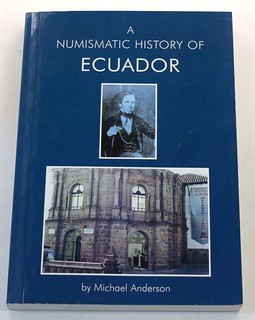

Lots 7 and 16
Lot 7: Anderson, Michael. A NUMISMATIC HISTORY OF ECUADOR. Greenlight Publishing and Latin American Press. 2001. 12mo, 394 pages; Softcover; The story of the Ecuadorian National Mint, in Quito. Perhaps the finest single work on the subject. Subject: History - Coinage - Ecuador
To read the complete lot description, see:
Anderson: A Numismatic History of Ecuador
(https://www.icollector.com/Anderson-A-Numismatic-History-of-Ecuador_i33413838)
Lot 16: Bancroft, Hubert Howe. BANCROFT'S WORKS: HISTORY OF CENTRAL AMERICA (VOLS. VI TO VIII) AND HISTORY OF MEXICO (VOLS. XII TO XIV). The History Company, Publishers. 1886. 12mo, pages; Hardcover; Full leather cover with gilt lettering, decoration, and ruling, raised bands on the spine. Covers show moderate wear and tear, edgewear and rubbing, discoloration and chipping, cracks in the joints. Marbled edges and endpapers.; Bancroft was an American historian and ethnologist whose writings on Central America and Mexico are contained in these six volumes. There are many fold out maps and illustrations throughout. Subject: History - Central America, Mexico
To read the complete lot description, see:
Bancroft:
Bancroft's Works: History of Central America (Vols. VI to VIII) and History of Mexico
(https://www.icollector.com/Bancroft-Bancroft-s-Works-History-of-Central-America-Vols-VI-to-VIII-and-History-of-Mexico-Vol_i33413847)


Lots 28 and 38
Lot 28: Calbeto de Grau, Gabriel. COMPENDIUM VIII REALES. Juan Ponce De Leon. 1970. 4to, 733 pages; Hardcover; Two volumes; Blue cloth gilt; Text in both English and Spanish; Includes list of prices booklet; A comprehensive study of the Eight Reales of Spain, Mexico, Central America, and South America, an index of the rulers of the time period, and a listing of mints in alphabetical order. It catalogs virtually every eight real coin ever minted and is richly illustrated with hundreds of photographs. It is regarded by many as the definitive guide to eight reales. Subject: Coinage - Spain - Colonial
To read the complete lot description, see:
Calbeto de Grau: Compendium VIII Reales: Vols. I
& II (https://www.icollector.com/Calbeto-de-Grau-Compendium-VIII-Reales-Vols-I-II_i33413859)
Lot 38: Chapman, Henry. COINS OF THE WORLD ANCIENT AND MODERN: THE COLLECTION OF JOHN STORY JENKS CATALOGUED BY HENRY CHAPMAN. Davis & Harvey. 1921. 4to, 635 pages; Hardcover; Ex Charles Davis March 4, 2000 sale; White cloth gilt; discolored from use; corners bumped and edges worn; Henry Chapman's best-remembered sale, and one of the finest coin auctions ever held in this country. John Story Jenks began collecting coins around 1850 and was 82 years of age when his collection was sold. For years the Jenks catalogue served as the best single reference guide to the entire range of numismatics. The American coins, from Colonials to pioneer gold, were of prime importance. Also hugely significant was the fine array of ancient Greek and Roman coins, the incredible selection of medieval and modern European rarities, and an especially important and extensive series of British coins. Subject: Coinage - Worl
To read the complete lot description, see:
Chapman:
Coins of the World Ancient and Modern: The Collection of John Story Jenks Catalogued by He
(https://www.icollector.com/Chapman-Coins-of-the-World-Ancient-and-Modern-The-Collection-of-John-Story-Jenks-Catalogued-by-He_i33413869)
To visit the Workman's Books web site, see:
http://www.workmansbooks.com/
To read earlier E-Sylum articles on Holland Wallace, see:
HOLLAND WALLACE (1940-2018) (https://www.coinbooks.org/v21/esylum_v21n42a14.html)
DALE SEPPA REMEMBERS HOLLAND WALLACE
(https://www.coinbooks.org/v21/esylum_v21n46a06.html)

HOWARD R. ENGEL ACQUIRES RICHARD STOCKLEY BOOKS
Longtime numismatic literature dealer Richard Stockley of Canada has retired and sold his business to fellow Canadian Howard R. Engel of Winnipeg. Congratulations and best wishes! He submitted this announcement. -Editor
I wish to inform all of you that I have sold my business, lock, stock & barrel to Howard R. Engel of Winnipeg, Manitoba, Canada. He will continue to use the name of Richard Stockley Books. My wife and I will be retiring to warmer climes, giving up the cold and snow and carrying all those heavy boxes. We will be moving to Belize in Central America hopefully early this fall.
It was a pleasure dealing with you, meeting you at shows (especially the RCNA Conventions) and befriending a number of you over all these years. I will miss the discussions we had about books and other related and unrelated topics.
We will be at the forthcoming RCNA Convention in Calgary this July with selections from 2 newly acquired collections. Drop by and have a look.
I hope you will continue to support and patronize the new owner as you did me.
If you wish to contact me you can use my Gmail address at rstockley39@gmail.com.
Following, you will find a short biography of Howard.
Howard R. Engel recently retired (as of Jan. 2/19) as Library Technician from Red River College (https://library.rrc.ca/default.aspx) after nearly 15 years' service there and more than 32 years in the library field. Howard collects numismatics (whether Canadian decimal, tokens, medallions, paper money, literature) and philately (mostly covers, postal history and literature) related to the numismatic and philatelic history of his home town and province, i.e. Winnipeg and Manitoba.
He also considers himself a "67 collector" that is of Canadian Confederation memorabilia, whether numismatic, philatelic and bibliographic, regardless of the specific anniversary (e.g. 50th, 60th, 100th, 125th, 150th, etc.). He has a soft spot for this area of collecting since he began to do so in Canada's centennial year, 1967 when his father, Roland, gave him some of his travel change.
Howard has been active in his local club, the Manitoba Coin Club (founded 1954, incorporated 1969: http://www.manitobacoinclub.org/) since 2013 when he re-entered the hobby after a 38-year hiatus thanks to a RCM print ad for "Canada's first gold coins" in a special issue of Maclean's Magazine featuring the election of Pope Francis.
 He is a Life Member of the Winnipeg Philatelic Society (http://www.wps.mb.ca/) and maintains
memberships in the American Numismatic Association, the Canadian Centennial Collectors Club, Canadian Token Collectors and the Royal Canadian
Numismatic Association. Howard has also been a regular customer of Richard Stockley Books since 2013 when he met Richard for the first time at the
Torex Show in Toronto that fall (see photo). He is delighted to have the opportunity to take over Canada's only numismatic/philatelic specialty
bookseller as an ongoing service to these hobbies, and to keep this business domiciled in Canada. He aims to keep up the personalized service to
which you have become accustomed with Richard at the helm after all these years.
He is a Life Member of the Winnipeg Philatelic Society (http://www.wps.mb.ca/) and maintains
memberships in the American Numismatic Association, the Canadian Centennial Collectors Club, Canadian Token Collectors and the Royal Canadian
Numismatic Association. Howard has also been a regular customer of Richard Stockley Books since 2013 when he met Richard for the first time at the
Torex Show in Toronto that fall (see photo). He is delighted to have the opportunity to take over Canada's only numismatic/philatelic specialty
bookseller as an ongoing service to these hobbies, and to keep this business domiciled in Canada. He aims to keep up the personalized service to
which you have become accustomed with Richard at the helm after all these years.
Feel free to send Howard your want lists at richardstockleybooks@mymts.net . Let him know when you wish to part with your numismatic or philatelic literature treasures as he is always interested in buying good material.
Howard is married to Esther G. Juce, a retired dental hygienist (since August 2016 after 25 years of scraping by) and she collects names for her Orthodox prayer book. Much to Esther's consternation, they happen to live within walking distance of the Royal Canadian Mint's Winnipeg Boutique.
Yours in numismatic literature,
Howard
Richard Stockley Books
Specializing in Numismatic & Philatelic Literature
Howard R. Engel, proprietor
2 Bayshore Cove
Winnipeg, Manitoba R2J 3G3
CANADA
204-253-0419
richardstockleybooks@mymts.net
Always looking to buy, sell or trade good material.
==============================================
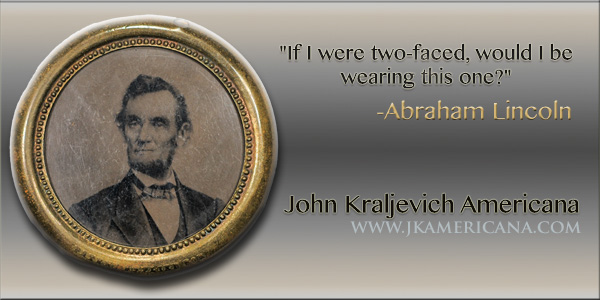
NEW BOOK: POTOSI AND LIMA SPANISH COLONIAL COINS
Herman Blanton provided this summary of a new-to-us book published in 2016 on Spanish Colonial coins of Potosí (Bolivia) and Lima (Peru). Thanks. -Editor
 Guía de las cantidades acuñadas, Cecas de Potosí y Lima, una síntesis y conversión matemática del trabajo
de Carlos Lazo García, con sección especial galanos. En memoria de Carlos Lazo García.
Guía de las cantidades acuñadas, Cecas de Potosí y Lima, una síntesis y conversión matemática del trabajo
de Carlos Lazo García, con sección especial galanos. En memoria de Carlos Lazo García.
Asociación Amigos de la Casa de Moneda de Segovia (Friends of the Segovia Mint) has published (in Spanish) Glenn Murray's new book as a guide to coin quantities struck at the Spanish Colonial mints of Potosí (Bolivia) and Lima (Peru).
While the book is in Spanish it is very usable even for those who don't read Spanish. The plentiful use of tables (over 75 pages have data tables) and hundreds of color photos makes a valuable ready reference for dates, mints, assayers and quantities struck. For example, on p. 126 we find that in 1713 Lima produced 40,325 eight escudos but only 447 four escudos indicating a relative rarity of 90:1.
A 56 page section on galanos (those special cob coins called "Royals") and Hearts makes this book indispensable for any collector or aficionado of the so called "royals."
Title: Guía de las cantidades acuñadas, Cecas de Potosí y Lima…
Author: Glenn Murray
Paperback: 294 pages
Publisher: Friends of the Segovia Mint (2016)
Language: Spanish
Product Dimensions: 150 × 210 mm [5-7/8 × 8-1/4 inch]
Net Weight: 720 grams (1.6 pounds)

For more information, or to order, see:
Book Review of Murray's Potosí and Lima
http://macuquina.com/articles/Book%20Review%20Murray%20
Cecas%20de%20Potosi%20and%20Lima.pdf
For related article on the so-called Royals and galanos see Blanton's article "The Royal Misnomer for Spanish American Cobs" in the
September/October 2018 NI Bulletin.
http://macuquina.com/articles/Royal%20Misnomer%20
from%20NIB%20v53%20nos%209%2010.pdf
To order for delivery within the USA (limited availability) contact Herman Blanton at hblanton@yahoo.com.
For more information on the Segovia Mint, see:
http://www.segoviamint.org/Eng-start.htm
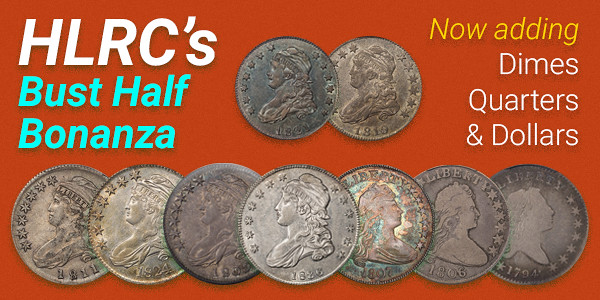
NEW BOOK: COINAGE OF THE RASHTRAKUTAS
Here's a new title available from Bagchee.com. Below is their overview for a new book on the coinage of the Rashtrakutas. -Editor
 History and Coinage of the Rashtrakutas
History and Coinage of the Rashtrakutas
Genres: Art and Architecture Numismatics
Authors (s): Gautam Jantakal (Author) , Bhushan Kapadia (Author) , Prakesh Jinjuvadiya (Author)
Format: Hardcover
ISBN-13: 9788193829127
Pages: 72p., Catalogue of 65 Coins; 3 Tables & 2 Maps;
Softcover; Coloured Printing.
Pub. date: 24.05.2019, 1st ed.
Publisher: IIRNS Publications
Language (s): English
Bagchee ID: BB120386
List price: US $ 77,00
Bagchee price: US $ 69,30
For long, no coins were known or, more correctly, identified of the Rashtrakutas, one of the most powerful dynasties of early medieval Deccan. While this was an enigma for many, others like the proponents of the theories of feudalism and paucity of coins in early medieval India used this to support their arguments. It was only in 1996 that the first Rashtrakuta coins were conclusively identified, and since then many a types of Rashtrakuta coins have come to light in the public domain and private.
For more information, or to order, see:
History and Coinage of the Rashtrakutas
(http://www.bagchee.com/books/BB120386/history-and-coinage-of-the-rashtrakutas)
NEW BOOK: ANCIENT INDIAN COINS AND METALS
here's a new title available from Bagchee.com. Below is their overview for a new book on scientific studies of Ancient Indian Coins and Metals. As noted in earlier articles, sites like PrintsAsia.com may be able to offer better deals for books published in India. -Editor
 Scientific Investigations of Ancient Indian Coins and Metals
Scientific Investigations of Ancient Indian Coins and Metals
Genres: Art and Architecture Numismatics
Authors (s): Manager Rajdeo Singh (Author) , Uma Shankar Lal (Author)
Format: Hardcover
ISBN-13: 9788193845721
Pages: 184p., Illus; 25cm.
Pub. date: 11.01.2019, 1st. ed.
Publisher: Agam Kala Prakashan
Language (s): English
Bagchee ID: BB118261
List price: US $ 72,00
Bagchee price: US $ 64,80
This book exclusively deals about the various advance instrumental techniques applied for the examination of historic Indian coins for their composition and microstructure. Based on the authors' more than 37 years of experience in the field of metal conservation, the book highlights the type and source of minerals for minting the coins, fabrication technology and discrimination between the fake and old coins based on scientific examinations. Few newer methods for the preservation of ancient coins, leaded bronzes, and metal artifacts have been highlighted based on field trial.
The book also incorporates about the cannon metal and fabrication technology used for bimetallic medieval cannons using advanced instrumental techniques like Electron Back scattered Diffraction (EBSD) and Scanning Electron Microscope (SEM). The authors have compiled all their international and national publications for this book project for the benefit of researchers, metal conservators and scientific institutions working in the field of metals and alloys.
For more information, or to order, see:
Scientific Investigations of Ancient
Indian Coins and Metals (http://www.bagchee.com/books/BB118261/scientific-investigations-of-ancient-indian-coins-and-metals)
To read the earlier E-Sylum article, see:
BETTER PRICES FOR NUMISMATIC BOOKS FROM INDIA
(https://www.coinbooks.org/esylum_v17n24a05.html)
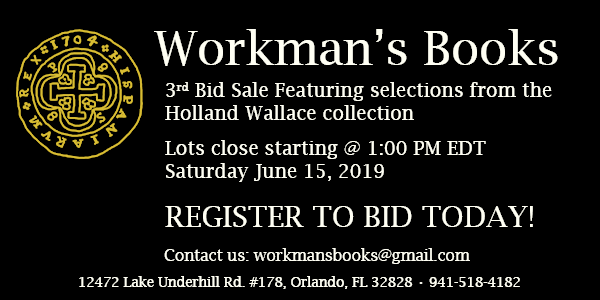
THE BANKNOTE BOOK: AZERBAIJAN CHAPTER
 Owen Linzmayer announced the availability of the latest chapter of The Banknote Book, a comprehensive catalog of the notes of
Azerbaijan. It's a slim chapter to be sure; most countries have monograph-sized chapters and many are the equivalent of books in their own right.
-Editor
Owen Linzmayer announced the availability of the latest chapter of The Banknote Book, a comprehensive catalog of the notes of
Azerbaijan. It's a slim chapter to be sure; most countries have monograph-sized chapters and many are the equivalent of books in their own right.
-Editor
We're very pleased to announce that the Azerbaijan Autonomous Republic chapter is now available for individual sale and as a free download to subscribers.
Azerbaijan Autonomous Republic (Middle East)
This 4-page catalog covers notes issued by the Azerbaijan National Government in 1946. Published 21.05.2019.
For more information, or to order, see:
http://banknotebook.contentshelf.com/shop

NEW BOOK: A BRIEF HISTORY OF DOOM
Financial crises stemming from bank panics, stock market crashes, wars and other events often drive innovation in the numismatic area, including paper scrip, tokens, and other substitutes for money. A new book examines financial crises through history. -Editor
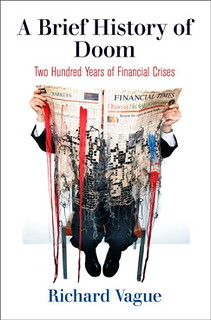 A Brief History of Doom
A Brief History of Doom
Two Hundred Years of Financial Crises
Richard Vague
240 pages | 6 x 9 | 75 illus.
Cloth Jun 2019 | ISBN 9780812251777 | $29.95 | Outside the Americas £23.99
Ebook editions are available from selected online vendors
Financial crises happen time and again in post-industrial economies-and they are extraordinarily damaging. Building on insights gleaned from many years of work in the banking industry and drawing on a vast trove of data, Richard Vague argues that such crises follow a pattern that makes them both predictable and avoidable.
A Brief History of Doom examines a series of major crises over the past 200 years in the United States, Great Britain, Germany, France, Japan, and China-including the Great Depression and the economic meltdown of 2008. Vague demonstrates that the over-accumulation of private debt does a better job than any other variable of explaining and predicting financial crises. In a series of clear and gripping chapters, he shows that in each case the rapid growth of loans produced widespread overcapacity, which then led to the spread of bad loans and bank failures. This cycle, according to Vague, is the essence of financial crises and the script they invariably follow.
The story of financial crisis is fundamentally the story of private debt and runaway lending. Convinced that we have it within our power to break the cycle, Vague provides the tools to enable politicians, bankers, and private citizens to recognize and respond to the danger signs before it begins again.
Philanthropist and former banker Richard Vague is a managing partner of Gabriel Investments, Chairman of The Governor's Woods Foundation, and author of The Next Economic Disaster: Why It's Coming and How to Avoid It, also available from the University of Pennsylvania Press.
For more informtion, or to order, see:
A Brief History of Doom Two Hundred Years of Financial Crises
(http://www.upenn.edu/pennpress/book/15996.html)

2019 IAPN BOOK PRIZES AWARDED
The International Association of Professional Numismatists (IAPN) has announced winners of their book prize for 2019. Peter Preston-Morley provided this announcement. Congratulations to the winners and all entrants alike - publishing a numismatic book is a singular achievement requiring months or years of effort. -Editor
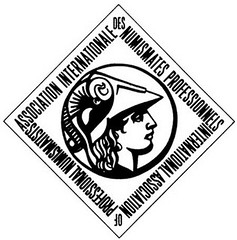 The Prize is awarded annually to the book voted by members of the IAPN as the most deserving, not necessarily from a commercial standpoint.
Voting takes place at the IAPN's General Assembly, which this year took place in Carefree, AZ last week.
The Prize is awarded annually to the book voted by members of the IAPN as the most deserving, not necessarily from a commercial standpoint.
Voting takes place at the IAPN's General Assembly, which this year took place in Carefree, AZ last week.
The Prize was first awarded in 1982, when it was won by the late Dr Martin Price. Since then other winners have included Philip Grierson, Mark Blackburn, Robert van Arsdell, Robert Friedberg, Sabine Bourgey, David Vagi, Harrington Manville, Christian Dekesel, Sylvia Hurter, Italo Vecchi and Hugo Vanhoudt.
The clear winner, with 46 points, was Catherine Lorber:
 LORBER, Catharine C. Coins of the Ptolemaic Empire. Part I, Ptolemy I through Ptolemy IV. 2 vols.
LORBER, Catharine C. Coins of the Ptolemaic Empire. Part I, Ptolemy I through Ptolemy IV. 2 vols.
American Numismatic Society, New York, 2018.
ISBN 978-0-89722-331-7, 978-0-89722-332-4
Price: US $325 ($230 to ANS members). Order from: www.numismatics.org
In second place, with 35 points, was John Dannreuther:
 DANNREUTHER, John W. United States Proof Coins. Volume IV: Gold. 2 vols, casebound.
DANNREUTHER, John W. United States Proof Coins. Volume IV: Gold. 2 vols, casebound.
John W. Dannreuther Publishing, Fullerton, USA, 2018.
ISBN 978-0-9998968-0-8
Price: US $250. Order from www.orcararities.com or www.numislit.com
In third place, with 29 points, was Francesco Pastrone:
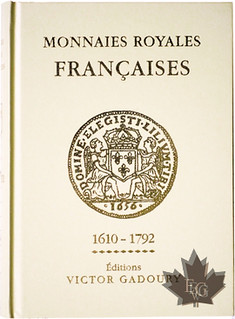 PASTRONE, Francesco. Monnaies Royales Françaises 1610-1792. 5th edition. Editions Victor Gadoury, Monaco, 2018.
PASTRONE, Francesco. Monnaies Royales Françaises 1610-1792. 5th edition. Editions Victor Gadoury, Monaco, 2018.
ISBN 2-906602-47-2
Price: €39. Order from www.gadoury.com
The prize will be presented to Cathy Lorber at an IAPN event held during the ANA Convention at Rosemont, Chicago, in August.
For more information on the IAPN Book Prize, see:
https://www.iapn-coins.org/iapn/iapn-book-prize.html
To read the earlier E-Sylum article, see:
2019 IAPN BOOK PRIZE NOMINATIONS
(https://www.coinbooks.org/v22/esylum_v22n15a03.html)

ROGER DE WARDT LANE (1927-2013)
Last week Alan Luedeking asked about Roger De Wardt Lane, author of Brother Can You Spare A Dime? - Modern Dime Size Silver Coins of the World. -Editor
Alan writes:
This panned out, but not in the way I had hoped. Herman Blanton (former editor in chief of the NI Bulletin) saw my post and responded. Sadly, Roger DeWardt Lane passed away in 2013.
Steve Schor was also able to confirm this. Below is a link to an online obituary. I'm very sorry to hear the news - Roger was a regular contributor over a number of years. -Editor
Steve writes:
Roger Lane passed away in 2013 at age 86. I had the privilege of editing the 3rd edition...and have the first book off the press presented to me by and signed by Roger.
Although I edited the book, I had no hand in doing the original research. This was done solely by Roger over a period of many years from many sources.
I will try to help Alan Luedeking to the extent that I can, although I have severe limitations with regard to the sources of the information in the book.
To read the complete online obituary, see:
Roger De Wardt Lane | 1927 - 2013 | Obituary
(http://www.bpfamilycare.com/obituary/3507390)
To read the earlier E-Sylum article, see:
NOTES FROM E-SYLUM READERS: MAY 19, 2019 : Roger Dewardt Lane Contact Sought
(https://www.coinbooks.org/v22/esylum_v22n20a12.html)

EPNNES AWARDS 2019 NEWMAN GRANTS
In January the Eric P. Newman Numismatic Education Society (EPNNES) announced the creation of the Newman Grant program to financially assist numismatic authors and organizations pursuing original research in American numismatics. The first set of Newman Grants was announced on May 25, 2019, date of the late Eric P. Newman's birthday. -Editor
Eric P. Newman Numismatic Education Society Announces First Newman Grants
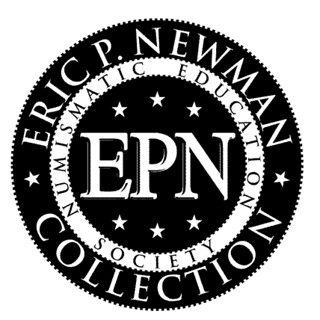 The Eric P. Newman Numismatic Education Society (EPNNES) today announces its first set of Newman Grants, created to financially assist
numismatic authors and organizations pursuing original research in American numismatics. Newman Grants will be awarded annually and are intended to
assist with direct costs of numismatic research including, but not limited to travel, photography, and graphic arts services. Eight awards are being
made this year, to promote research in several areas, including colonial numismatics, U.S. federal coinage, paper money, medals, and counterfeit
detection. The 2019 Newman Grant awardees are:
The Eric P. Newman Numismatic Education Society (EPNNES) today announces its first set of Newman Grants, created to financially assist
numismatic authors and organizations pursuing original research in American numismatics. Newman Grants will be awarded annually and are intended to
assist with direct costs of numismatic research including, but not limited to travel, photography, and graphic arts services. Eight awards are being
made this year, to promote research in several areas, including colonial numismatics, U.S. federal coinage, paper money, medals, and counterfeit
detection. The 2019 Newman Grant awardees are:
Steve Herrman, for photography of the Steve Crain Liberty Seated half dime die variety reference collection. The Crain collection includes nearly a thousand examples and is the most comprehensive such group ever assembled.
Malcolm Mathias, who will be creating a census of Harvey Maranville coin testers, a 19th century coin counterfeit detection device. Mathias will travel extensively to view these rare pieces and create a photographic record.
Chris McDowell, for the creation of a census of American Pitt tokens, including photography of all known examples. McDowell will travel to view important collections, and rework existing provenance data.
Johsua Smith, who is studying the California depression-era scrip known as California clam money and will be devising methods to distinguish modern recreations from originally issued scrip.
Chris Steenerson, for creation of a database of certified plate proofs in the U.S. currency series, including legal tender U.S. notes, gold and silver certificates, Indian Territory bank notes, and others.
Harry Waterson, who will be writing a catalog of the work of the medal engraver Julio Kilenyi, an early 20 th century artist and one of America's most prolific medallists of the era.
Two of the eight Newman Grant awards, while not directly involving numismatic objects, are aimed at increasing the discoverability of existing research resources and are awarded as follows:
David Fanning, who will be preparing a census of ancient coins in early American auction sale catalogs with photographic plates. Fanning has previously published on numismatic literature and is a recognized authority in this area.
Tim Welo, for preparation of a database of scripophily (bonds, shares, and stock certificates) auction sale catalogs.
It is the hope of EPNNES that this program will continue the legacy of Eric P. Newman in a way that would reflect his high standards for numismatic research.
Congratulations to the awardees. Many thanks to EPNNES for helping make more original numismatic research possible. We'll look forward to the fruits of these efforts. -Editor
To read the earlier E-Sylum article, see:
EPNNES INVITES APPLICATIONS FOR NEWMAN GRANTS
(https://www.coinbooks.org/v22/esylum_v22n03a11.html)
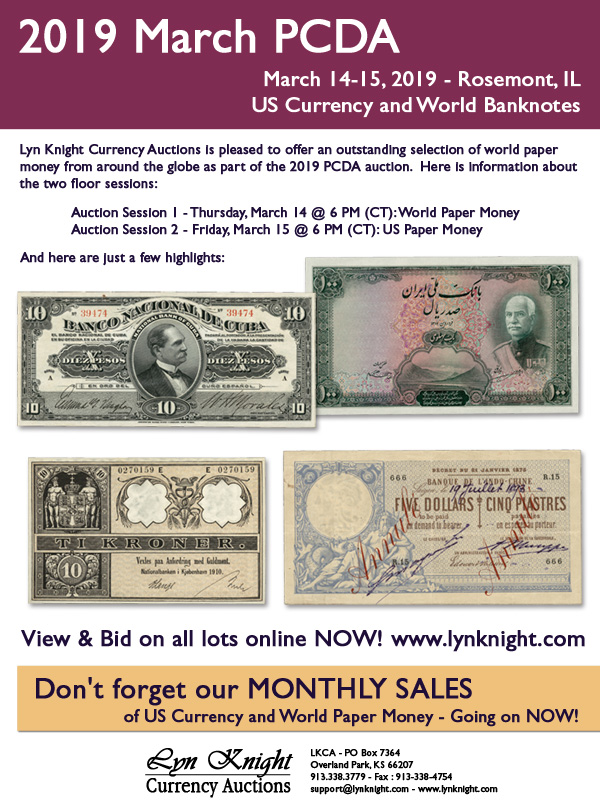
VIDEO: COLLECTORS HERBERT & MICHAEL SCHMIDT
These are selections from the David Lisot Video Library that feature news and personalities from the world of coin collecting. David has been attending coin conventions since 1972 and began videotaping in 1985. In 2017 the Newman Numismatic Portal reached an agreement to list all David's videos on their website. Each week an excerpt of a different video is available on the CoinTelevision YouTube channel.
Here's one on father-and-son collectors Herbert & Michael Schmidt. -Editor
 Coin collecting can be a family affair and it certainly is between this father and son. You will enjoy this interview with a 90 year old
dad and his 58 year old son both of whom are numismatists. Together they share why coin collecting has brought them so much enjoyment during the last
50 years.
Coin collecting can be a family affair and it certainly is between this father and son. You will enjoy this interview with a 90 year old
dad and his 58 year old son both of whom are numismatists. Together they share why coin collecting has brought them so much enjoyment during the last
50 years.
The entire interview is available on the Newman Numismatic Portal at:
https://nnp.wustl.edu/library/multimediadetail/522852
An excerpt of the video is available for viewing on the Coin Television YouTube Channel at:
https://youtu.be/4accCE8EDgs
Father-Son Team Shares Passion for Coin Collecting.
VIDEO: 4:5
Herbert & Michael Schmidt, David Lisot, Interviewer, CoinTelevision.com.

NOTES FROM E-SYLUM READERS: MAY 26, 2019
New Subscriber: Rodney Bobak
Bob Crooks writes:
I have been reading The E-Sylum weekly newsletter for the last couple of years and find the diversity of articles just amazing. This past week I shared one of your newsletters with Rodney Bobak, the education director of our little coin club in Morganton, North Carolina. He is interested in receiving E-Sylum on a regular basis.
DONE. Welcome aboard! -Editor
ANA Ex-President Medal?
Jeremy Schneider writes:
I always enjoy the vocabulary terms every week- this week "Convention badges" got me thinking that I should share something that I had recently acquired, and that I've had some trouble finding out additional information about- if any any of the readers has any information they could provide, I would greatly appreciate it!
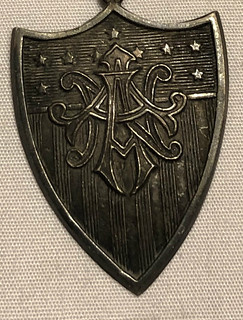 I recently picked up this badge. I was told by the person who I had purchased it from, who had recently inherited it, that her father
likely purchased this at a coin show in the 1950's possibly in the St. Louis Area, and that it was a medal for an American Numismatic Association
past president (strangely noted as "Ex President"!) and had believed it was from around 1910's; unfortunately she did not have any
additional information regarding prior ownership, etc.
I recently picked up this badge. I was told by the person who I had purchased it from, who had recently inherited it, that her father
likely purchased this at a coin show in the 1950's possibly in the St. Louis Area, and that it was a medal for an American Numismatic Association
past president (strangely noted as "Ex President"!) and had believed it was from around 1910's; unfortunately she did not have any
additional information regarding prior ownership, etc.
There were certainly some big hitters in the numismatic world, as presidents of the ANA at that time, unfortunately, there are no names etched on the medal. I have done some research but have yet to be able to attach it to any individual.

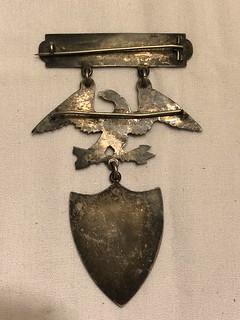
Interesting! I've seen plenty of early ANA convention medals, but don't recall anything like this. It seems plausible that this is from the 1910s era. The monogram does seem to be the letters A N A. Is anyone familiar with this? Is it really an ANA item? -Editor
To read the earlier E-Sylum article, see:
VOCABULARY TERM: CONVENTION BADGE
(https://www.coinbooks.org/v22/esylum_v22n20a15.html)
Query: Cuba's ABC Pesos

Jeffrey Zarit writes:
In Cuba, in silver, first there are the Star pesos 1915 to 1934; and the next series 1934-1939 are the ABC pesos. What does ABC stand for? I have always been curious.
Through a web search I found an answer on the Moneta Gallery Coin Museum web site: "The following from Steve Album: The ABC peso achieved its odd name from a group titled the "ABC". This group was a clandestine, revolutionary protest group with members from the University of Havana and young professionals who raised against the dictatorial rule of President Gerardo Machado. The ABC got its simple name from the three alphabetical cells its members belonged to; A, B, and C." -Editor
To read the complete article, see:
Cuba ABC Peso - 1934
(http://www.moneta-coins.com/photopost/showphoto.php?photo=2158&title=cuba-abc-peso1934&cat=602)
Here's a little more about the group from Wikipedia. -Editor
 In 1932, the ABC issued a Program Manifesto, written predominantly by Martínez Saenz, Mañach, and Ichaso. The Manifesto called for a range
of reforms, including women's suffrage, worker's rights (unions, eight-hour day, right to strike, pensions), the elimination of latifundios
through taxation, and the creation of cooperatives. It also called for the creation of a Cuban National Bank.
In 1932, the ABC issued a Program Manifesto, written predominantly by Martínez Saenz, Mañach, and Ichaso. The Manifesto called for a range
of reforms, including women's suffrage, worker's rights (unions, eight-hour day, right to strike, pensions), the elimination of latifundios
through taxation, and the creation of cooperatives. It also called for the creation of a Cuban National Bank.
Though wide-ranging, the ABC's program has been described as more pragmatic or realistic than those of other opposition groups at the time.
The ABC itself declared its opposition to both communism and fascism. Its green banner contrasted notably with the gray, black, and blue colors of contemporary European right-wing groups, and its logo inspired by the Jewish star was intended to connote persecution.
To read the complete Wikipedia article, see:
ABC (Cuba) (https://en.wikipedia.org/wiki/ABC_(Cuba))
A True Collector's Mentality
Regarding the famous quote on "A True Collector's Mentality" from the will of Edmond de Goncourt, Jeffrey S Zarit writes:
I know now where this came from. It is in my last will.
To read the earlier E-Sylum article, see:
NEW BOOK: THE COLLECTOR'S HANDBOOK, 10TH ED.
(https://www.coinbooks.org/v22/esylum_v22n20a06.html)
Query: Whitehorse, Yukon Local Currency
Dick Hanscom writes:
Attached are scans of a local currency from Whitehorse, Yukon. My inquiries in Whitehorse have gone unanswered. I was hoping that some one who collects/documents/studies these might have some information on it.


Interesting labor exchange note, from back in 2000. Nearly twenty years on, it might be tough to find more information on it. Can anyone help? Is there anything in local newspapers of the day? -Editor
Nick Graver enjoyed this money-based graphic from the Rochester Democrat and Chronicle May 7, 2019. Thanks. I was unable to find the graphic on the paper's web site, but here's a scan with a link to the article below. -Editor
To read the earlier E-Sylum article, see:
Property taxes:
These places pay the most in New York
(https://www.democratandchronicle.com/story/news/politics/albany/2019/05/03/how-much-did-new-yorkers-pay-taxes-last-year/3661422002/)

THE ENDURING APPEAL OF THE LINCOLN CENT
David Lange penned this article on the Enduring Appeal of the Lincoln Cent for Whitman Publishing. Thanks to WHitman for the text and images. -Editor
David W. Lange on the Enduring Appeal of the Lincoln Cent
 Like most numismatists of my generation, I discovered the hobby of collecting coins through the Lincoln cent series. My introduction
occurred at a very tender age, around six or seven, and I have my older brother Doug to thank for that. In the early 1960s coin collecting was all
the rage, and it seems that every boy (and a few girls) were eagerly trying to fill their Whitman folders with Lincoln cents from 1909 to 1940 (No.
9004) and from 1941 onward (No. 9030). These folders were perhaps the most familiar tools of the coin hobby at the time, and competition to be the
first to complete either one was keen in every American neighborhood.
Like most numismatists of my generation, I discovered the hobby of collecting coins through the Lincoln cent series. My introduction
occurred at a very tender age, around six or seven, and I have my older brother Doug to thank for that. In the early 1960s coin collecting was all
the rage, and it seems that every boy (and a few girls) were eagerly trying to fill their Whitman folders with Lincoln cents from 1909 to 1940 (No.
9004) and from 1941 onward (No. 9030). These folders were perhaps the most familiar tools of the coin hobby at the time, and competition to be the
first to complete either one was keen in every American neighborhood.
Most young hobbyists soon tired of the pursuit and moved on to other interests, and my brother was no exception. I was gifted his partially filled Whitman folders and his one-volume library, which consisted of the 1964 Whitman Blue Book. Since that day, I have never known a time when I was not either fully consumed with numismatics or, as during high school, at least keeping it in my peripheral vision.

June 1967: Young numismatist David W. Lange, his father (standing), and the neighbors who helped build his Lincoln cent collection.
As a child I eagerly pestered everyone I could find to examine their pocket change and their "penny jars" that each household seemed to keep. I managed to add several missing coins to the collection, but it became evident that the best years of cent hunting were already past. Soon I hit a wall, and only the newly released issues were being acquired. Additional folders were acquired for Buffalo and Jefferson nickels, Mercury and Roosevelt dimes, and even Washington quarters, though that series really cut into my candy and model-kit funds. Still yearning to add more Lincolns to my stalled collection, I made my very first numismatic purchase: a 1914 cent in Good condition for 75 cents-the same value it carries today in the Red Book! This exchange occurred at the coin-and-stamp counter in the local F.W. Woolworth store, and the very fact that old coins could be bought at general retail stores itself brings on a wave of nostalgia for a time long past.
When it seemed that this costly course would be my only hope of adding to my Lincoln collection, a miracle occurred. Our next-door neighbor Bob, who seemed to have every hobby under the sun, came over to our house bringing along daughter Robin and his home-built coin cabinet stuffed with plastic tubes full of coins. His job included emptying the parking meters along San Francisco's waterfront, and he very carefully bought anything old or interesting that people had stuffed into these machines. In his hobby box he had tubes of such exotic fare as Shield nickels, Liberty Seated dimes, and three-cent pieces. But, most importantly, he had a tube for every date in the Lincoln cent series from 1909 through 1940. That evening he very thoughtfully filled most of the remaining openings in my Whitman folder, leaving only about half a dozen slots for the key dates. This magical occasion was captured on film by my brother, who had just received a camera for his birthday, and I cherish both that image and my memory of the experience. Included in this photo is my father standing behind me with a warm smile, the same one he has today in his early 90s.
It would be another 45 years before I finally finished that circulated collection of Lincoln cents with the purchase of the key 1909-S V.D.B. In the meantime, I'd already completed a second set in Mint State and About Uncirculated grades. Though beautiful, these coins meant less to me than the worn pieces which carried with them so many associations. I sold the high-grade set at auction, yet I still have my circulated collection, since upgraded from Whitman folders to Whitman albums.
Some years ago I wrote several titles in a series of "Complete Guide" books, and one of these focused on Lincoln cents. Though published in 1996, it has been reprinted several times, in each instance with a different cover design. Later, it was my privilege to be a contributor to Q. David Bowers's first edition of the Guide Book of Lincoln Cents, which has succeeded my own as the current reference to the series. And this year, it was my even greater privilege to write the foreword for my long-time correspondent, good friend, and fellow Rittenhouse Society member, Dave Bowers, in the third edition of his Lincoln cent book.
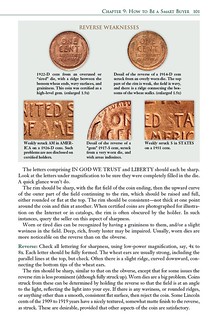

No one captures the appeal of collecting coins like QDB, while simultaneously telling us everything we need to know about the subject at hand. To read A Guide Book of Lincoln Cents is to learn this series in depth and to fully appreciate the changing face of the Lincoln cent over more than a century. Included, too, are great anecdotes about the year in which each issue was coined. The only way to truly appreciate an old coin is to understand the role it played at the time, and by placing each entry in its historical context, Dave Bowers has brought it to life. Comparing his book's great photos of Mint State coins with the same issues worn nearly slick, as so often found, gives a sense of how many generations used these coins in everyday life.
Chapters on history, the various mints, grading and buying Lincoln cents, and even ways of collecting the series make Dave's book a treasure in its own right. So much of the information is applicable to any coin type that this reference is a must-have for any numismatic library.
THE BOOK BAZARRE
VOCABULARY TERM: CONCAVED EDGE
Dick Johnson submitted this entry from his Encyclopedia of Coin and Medal Terminology. George Cuhaj kindly provided images of a World Scout Foundation Baden-Powell World Fellowship medal exhibiting this type of edge. Thanks! -Editor

Concaved Edge. 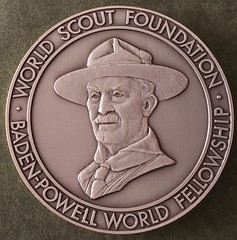 A shallow furrow around the edge of a medal, creating an artistic notched effect. It has an additional and utilitarian purpose of aiding
the fingers to pick up and hold the numismatic item with such an edge. An example of concaved edge was the 4-inch Woolworth 50th Anniversary
Medallion of 1929 by Julio Kilenyi and struck by Whitehead & Hoag. A type of concave edge with a V-shaped furrow is called contorniate. An
anomaly of trimming can create a concaved edge; an example was a James Cardinal Gibbons Medal of 1911 which had an uneven furrow cut in the edge due
to improper turning on the lathe, and should have been rejected. (J&J 26:688). See edge.
A shallow furrow around the edge of a medal, creating an artistic notched effect. It has an additional and utilitarian purpose of aiding
the fingers to pick up and hold the numismatic item with such an edge. An example of concaved edge was the 4-inch Woolworth 50th Anniversary
Medallion of 1929 by Julio Kilenyi and struck by Whitehead & Hoag. A type of concave edge with a V-shaped furrow is called contorniate. An
anomaly of trimming can create a concaved edge; an example was a James Cardinal Gibbons Medal of 1911 which had an uneven furrow cut in the edge due
to improper turning on the lathe, and should have been rejected. (J&J 26:688). See edge.
George adds:
Note that you can still see the horizontal lathe trim lines. The Medal is 70mm silver. Struck by Huguenin (Now Faude + Huguenin, located in La Locle, Switzerland) (The FIDEM Congress of 1998 had a great floor tour of this facility). Given with a certificate to donors of $10,000 USD or more (in one lump sum or total thereof spread over 5 years) to the World Scout Foundation.
Looking for the meaning of a numismatic word, or the description of a term? Try the Newman Numismatic Portal's Numismatic Dictionary at: https://nnp.wustl.edu/library/dictionary
Or if you would like a printed copy of the complete Encyclopedia, it is available. There are 1,854 terms, on 678 pages, in The Encyclopedia of Coin and Medal Technology. Even running two a week would require more than 19 years to publish them all. If you would like an advance draft of this vital reference work it may be obtained from the author for your check of $50 sent postpaid. Dick Johnson, 139 Thompson Drive, Torrington, CT 06790.
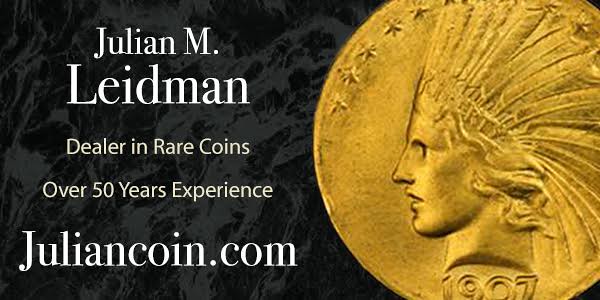
CALVIN FRANK CLARKE (1872-1952)
 C. F. Clarke & Company was established about the end of 1906 or the beginning of 1907 by Calvin F. Clarke and either his finance or
wife Bernice. The Clarke's developed perhaps the largest mail order coin dealerships in the country. His son Wilfred continued the company for at
least eight more years until around 1960.
C. F. Clarke & Company was established about the end of 1906 or the beginning of 1907 by Calvin F. Clarke and either his finance or
wife Bernice. The Clarke's developed perhaps the largest mail order coin dealerships in the country. His son Wilfred continued the company for at
least eight more years until around 1960.
Calvin Frank Clarke (1872-1952), was born on October 31, 1872, at Le Roy, Genesee County, New York, the eldest of three children born to Harrison Clarke (1841-1925), a native of Connecticut, and Lucinda Mahala Clarke (1845-1914), a native of New York.
Calvin F. Clarke graduated elementary school at Le Roy, New York, and from there worked on a farm.
He is listed in both the 1900 U.S. Census and 1905 New York Census as a farmer.
Around 1887, he began a sideline from his farming work as a philatelic dealer selling stamps, photo post cards, and comic post cards. He mainly dealt in stamps exclusively from 1887 to 1906/7. During that period he compiled The Philatelic Stamp Value Book, circa 1889-1890, 16-pages.
Noticeable increases in premiums in the coin market caused Clarke to increase his focus on the buying and selling of coins, which seems to have been influenced by the aggressive advertising of B. Max Mehl and undoubtedly by the loving guidance of his future father-in-law Wilfred F. Brand (1862-1939), publisher of the Le Roy News. Among Clarke's coin clients was numismatic notable John A. Beck "The Salt King" of Allegheny City, Pennsylvania.
Clarke's first known numismatic publication circa 1906/7 was the then stylish art nouveau designed The Eureka Money Manual.


Beginning in August 1909, his newspaper coin advertisements were published regularly in area newspapers. Note C. F. Clarke & Co., originally incorporated both his initials and his wife Bernice as C. F. B. Clarke & Co., coin dealers. Right after Valentine's Day 1910 the B. was dropped, which is most probably just a coincidence and does not necessitate reading into it any marital strife or Bernice's no longer being part of the company. Also, the caveat to not spend but save all old coins before 1880 was changed in October 1910 to read "coined before 1884" instead of 1880, and in 1913 it was changed to "before 1895".
 Clarke's new format for his Reliable Premium Coin Catalogue and Price List made its debut April 12, 1909, and cost 10 cents.
Clarke's new format for his Reliable Premium Coin Catalogue and Price List made its debut April 12, 1909, and cost 10 cents.
On August 26, 1912, he was a charter member of the Rochester Numismatic Association (RNA)
He applied for membership in the ANA in September 1912. In October 1912, he became ANA Member No. 1625.
He was one of the first great advertisers and kept the limelight in the news as a promoter similar to the style of B. Max Mehl. Above : "LeRoy Man Receives Shipment of One Dollar Gold Pieces" when Clarke received 570 gold dollars in the mail of the so-called Civil War Hoard. Ithaca Journal, Wednesday, January 16, 1924, page 11. The story ran in all the local papers.
He died at home November 24, 1952. John Pittman sent flowers on behalf of the RNA. George Bauer attended the funeral at the Clarke home 20 Union Street.
 Numismatic bibliophiles should definitely visit John's site and see the complete article - it's profusely illustrated with examples
of Clarke's publications. -Editor
Numismatic bibliophiles should definitely visit John's site and see the complete article - it's profusely illustrated with examples
of Clarke's publications. -Editor
To read the complete article, see:
CLARKE, CALVIN FRANK
(https://sites.google.com/a/numismaticmall.com/www/numismaticmall-com/clarke-calvin-f)
The entire inventory of the Lupia Numismatic Library is for sale. Individual items will be available before the remaining archives are broken up into parcels sold at philatelic auctions in the U. S. and Hong Kong. Check NumismaticMall.com frequently as dozens of new items with estimates will be posted daily until everything is sold.
All inquiries will be given prompt and courteous attention. Write to: john@numismaticmall.com .

ISRAELI NUMISMATIST LEO KADMAN
Yosef Sa'ar forwarded this article from Haaretz about Israeli numismatist Leo Kadman. Thanks! Here's an excerpt - see the complete article online for more about his unusual lifestyle - "The Openly Polyamorous Family That Shocked Tel Aviv in the '20s". -Editor

The Leo Kadman family at home in Tel Aviv
From left: Leo, Shulamit and Gurit with their grandchildren
Among the passengers on the S.S. Umbria, a ship carrying German Jewish immigrants that arrived at Jaffa port on October 22, 1920, were the members of the Kaufmann family. They were a singular family unit. There was Leo, the father, and Gertrude (afterward Gurit), the mother, with their 10-month-old son Raphael – and there was also Leo's other wife, Shulamit, a young physician. Leo was 25; Gertrude, 23; Shulamit, 24. Ardent Zionists all, members of the Blau Weiss (Blue White) Jewish youth organization in Germany, they had come to help create a new society in the Land of Israel.
Both women, Gertrude-Gurit and Shulamit, bore the surname "Kaufmann," which after Israel's establishment they Hebraized to "Kadman." Gurit initiated the surname change, and everyone was enthusiastic about switching from a name that meant "salesperson" in German, to a name whose Hebrew root refers to "progress," as Gurit emphasized. On the same occasion, she took a first name no one had ever heard before: Gurit.
Numismatic expertise
One day in the early 1920s, Leo Kadman wrote in his memoirs, he was walking on the beach near Caesarea when an Arab boy offered to sell him an
ancient coin. He identified it as a coin from the period of the Roman conquest and destruction of the Second Temple. Thereafter, he started to
collect coins and became an expert in the currency of the Roman era in the country, publishing books and articles on the subject. He was a founder of
the Israel Numismatic Society, which met in the house on Shalag Street. In 1962, he donated his collection to the Eretz Israel Museum in Ramat Aviv,
and financed the creation of the museum's Kadman Numismatic Pavilion to house the coins.
In December 1963, Kadman's longtime dream of hosting the International Numismatic Congress in Israel came true. At the opening event, held at the Hebrew University, he welcomed the participants, uttered a couple of words, suffered a heart attack and collapsed on the stage. Physicians in the audience tried to revive him, but to no avail.
Ayala recalls that the chief rabbi of Tel Aviv initially refused to bury her father in a regular cemetery – he cast doubt on Leo's Jewishness, because he had lived with two women. After discovering that Leo and Shulamit were not formally married, but that she was his common-law wife, he agreed to a regular burial.
Shulamit died in 1977, and Gurit passed away 10 years later, at the age of 90.
To read the complete article (subscription required), see:
The Openly
Polyamorous Family That Shocked Tel Aviv in the '20s
(https://www.haaretz.com/israel-news/.premium.MAGAZINE-the-openly-polyamorous-family-that-shocked-tel-aviv-in-the-20s-1.7213138)
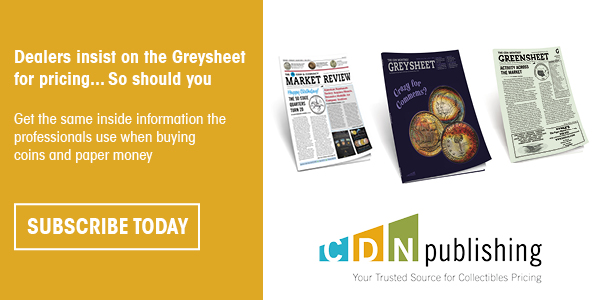
NUMISMATIC NUGGETS: MAY 26, 2019
Here's a selection of interesting or unusual items I came across in the marketplace this week. Tell us what you think of some of these. -Editor
1796 Pye's Provincial Copper Coins or Tokens


Description: PYE, CHARLES
PROVINCIAL COPPER COINS OR TOKENS
Birmingham: Thomas Pearson, [1796]. 4to [large paper copy], 36 engraved plates, contemporary half calf rebacked, bookplate of George Chetwynd, some
light, scattered foxing and slight marginal dampstaining [ESTC T105266]
For the numismatic bibliophile. -Editor
To read the complete lot description, see:
Lot 22: PYE, CHARLES PROVINCIAL COPPER COINS OR TOKENS
(https://www.invaluable.com/auction-lot/-1-c-3EF4E98B0F)
Poland 1982 2.000 Zlotych

Volksrepublik, 1945-1989.
2.000 Zlotych 1982. Papst Johannes Paul II. 6,12 g Feingold. In US-Plastikholder der PCGS mit der Bewertung PR 65 DCAM. Fb. 129; Schl. 56.
from the Kunker Auction 323 of Polish coins. -Editor
To read the complete lot description, see:
Volksrepublik, 1945-1989. 2.000 Zlotych 1982. Fb. 129; Schl. 56.
(https://www.kuenker.de/en/auktionen/stueck/226886)
1959 Portugal 20 Escudos

P# 153b; ? YRK 02823; XF+; RARE!
From the May 29, 2019 Katz auction. -Editor
To read the complete lot description, see:
Portugal 20 Escudos 1959 RARE!
(https://www.katzauction.com/lots/view/1-1X9QSZ/portugal-20-escudos-1959-rare)

CELTIC COINS FOUND IN OLD COIN BOOK
John A. Mellman passed along this blog post found via the Philobiblos blog about coins found inside an old book. Thanks. Here's an excerpt - be sure to read the complete article online. -Editor
 Most people have hidden a little cash in a book at one time or another, and librarians are never surprised to encounter examples of things
tucked into books about them, like dried plants pressed in herbals. That said, I wasn't expecting to find medieval coins laid into an
eighteenth-century numismatic handbook, but that's exactly what happened when I paged through the Kislak Center's copy of the second volume of
Mikuláš Voigt's Beschreibung der bisher bekannten Böhmischen Münzen nach chronologischer Ordnung (Prague: Gerlische Buchhandlung,
1771-1787).
Most people have hidden a little cash in a book at one time or another, and librarians are never surprised to encounter examples of things
tucked into books about them, like dried plants pressed in herbals. That said, I wasn't expecting to find medieval coins laid into an
eighteenth-century numismatic handbook, but that's exactly what happened when I paged through the Kislak Center's copy of the second volume of
Mikuláš Voigt's Beschreibung der bisher bekannten Böhmischen Münzen nach chronologischer Ordnung (Prague: Gerlische Buchhandlung,
1771-1787).
The Piarist Voigt (1733-1787) was a pioneering Czech numismatist who studied the Podmokelský poklad-a hoard of Celtic rainbow cups buried in a bronze cauldron and unearthed by a farmer at Podmokly in western Bohemia in 1771-as well as writing this inventory of then-known Bohemian specie. A previous (unidentified, alas, but possibly 20th-century) owner of our copy of volume 2 laid in four small envelopes containing two thirteenth-, one fourteenth-, and two fifteenth-century coins next to the engraved illustrations depicting them.
The oldest and most fragile of the five coins is a silver bracteate produced under Ottokar II, who ruled Bohemia from 1253 until his 1278 death in battle against Rudolf I, King of the Romans (whose throne he coveted). Bracteates were a common German penny from the twelfth to the fifteenth centuries; minted for local circulation, these very thin, one-sided coins feature a repoussé image on the obverse. The device on our example, according to Voigt, is "[d]er böhmische gekrönte Löwe mit doppeltem Schweife; auf der Brust das österreichische Wappen" [the Bohemian crowned lion with double tail; on its breast the Austrian coat of arms] (p. 63).

To read the complete article, see:
Skryté Stříbro! (Hidden Silver!)
(https://pennrare.wordpress.com/2019/05/22/hidden-silver/)

UTAH SPANISH COIN FIND: NEVERMIND
Here's a follow-up from the Salt Lake Tribune about those old Spanish coins found in Utah. -Editor
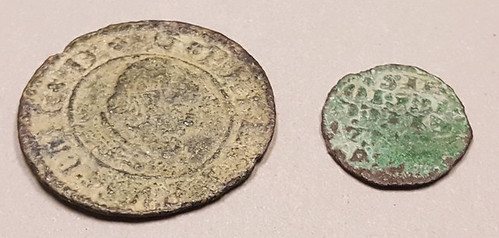
The recent discovery of two ancient Spanish coins near Halls Crossing excited archaeologists at Glen Canyon National Recreation Area, who wondered whether they offered evidence that Spanish explorers, possibly in search of mythical cities of gold, passed through Utah centuries ago.
While the coins were determined to be authentic, National Park Service officials have now concluded that they were not left behind by Spaniards in colonial times. Circumstantial evidence, such as the 400-year difference in the two coins' ages, indicates they most likely came from a modern collection, but that finding raises other questions.
Why would someone just throw away or lose valuable coins, dating back to the 13th and 17th centuries, in Utah canyon country? Yet the coins do tell two important stories.
"First, the visitor who found the coins and turned them into the park showed great respect for the history and resources in the park and instead of keeping them, ensured everyone could learn about the coins," the park service wrote in a news release Tuesday. "Second, the coins' exact location and what they were found with has contributed to educated guesses about their history. This is why archaeological artifacts should be left in place and reported to the land management agency; where they are is just as important as what they are."
The smaller of the two coins, called a dinero, was minted between 1252 and 1284, dating to the reign of Alfonso X. The larger coin is a "16 maravedis," dating from 1662 to 1664. The coins' mintings, four centuries apart, date to at least a century before the famous expedition of Atanasio Domínguez and Silvestre Vélez de Escalante, who crossed southern Utah in 1776.
To read the complete article, see:
Where did ancient Spanish coins found in Utah's Glen Canyon
come from? (https://www.sltrib.com/news/environment/2019/05/22/where-did-ancient-spanish/)
To read earlier E-Sylum articles, see:
UTAH SPANISH COIN FIND PUZZLES PARK SERVICE
(https://www.coinbooks.org/v22/esylum_v22n17a23.html)
NOTES FROM E-SYLUM READERS: MAY 19, 2019 : On Pranking Archaeologists With Salted
Coins (https://www.coinbooks.org/v22/esylum_v22n20a12.html)
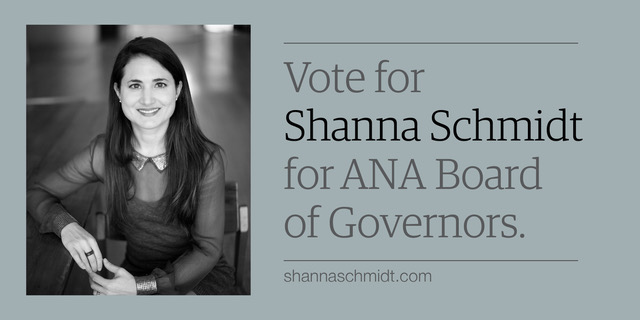
D. W. VALENTINE PRESIDENTIAL MEDAL
In the April 2019 issue of the John Reich Journal (the official publication of the John Reich Collectors Society), Dave Perkins published an article about the rare New York Numismatic Club medal for author D. W. Valentine. With permission, we're republishing it here. -Editor
 D. W. Valentine Presidential Medal
D. W. Valentine Presidential Medal
By W. David Perkins, NLG
If you collect early United States Half Dimes and think finding one of each variety and /or die marriage is tough, try finding an example of the D. W. Valentine President of the Club Medal!
For those who don't know, Daniel Webster Valentine was a researcher and collector of half dimes. The American Numismatic Society published Valentine's The United States Half Dimes as part of their Numismatic Notes and Monographs series in 1931. This became the standard reference for early U.S. Half Dimes until two of our founders, Russell J. Logan and John W. McCloskey, published Federal Half Dimes 1792-1837 in 1998.
Valentine was the fifth president of the New York Numismatic Club in New York City. The medal has the years "1918 AND 1920" in the lower obverse field, the years Valentine was president of the club. Best I can tell, Valentine was President in 1918 and again in 1920 (for these two years only).
This medal was struck by the Medallic Art Co. Fifty examples were struck in Bronze and eight in silver. This medal is #31 of the 50 struck. It took the owner over 25 years to look for and acquire this Medal!
Daniel Webster Valentine was inducted into the JRCS Hall of Fame in 2010.
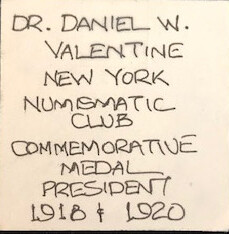
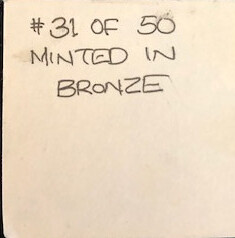
For more information on the John Reich Collectors Society, see:
http://www.jrcs.org/
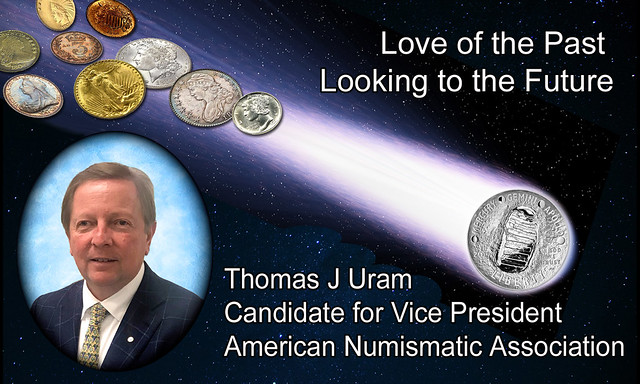
ASBURY PARK GOLD CERTIFICATES DISPUTED
The Asbury Park Press published a story May 20, 2019 about a group of early gold certificates found in an old basement safe in Asbury Park, NJ. They are now the subject of a lawsuit. -Editor
 This is the front of a $500 gold certificate from 1882. A similar certificate was found in an Asbury Park home and is believed to have
been sold for $1.4 million. The certificate is a focus of a criminal trial and a civil lawsuit.
This is the front of a $500 gold certificate from 1882. A similar certificate was found in an Asbury Park home and is believed to have
been sold for $1.4 million. The certificate is a focus of a criminal trial and a civil lawsuit.
Elaine Palmer nestled away 13 Civil War-era gold certificates, knowing at some point the antique money would be a safety net for her family.
Use them to fix up the family's Asbury Park home, Palmer told her granddaughter, Lisa Linder. It was supposed to provide stability for Linder and her adult daughter with special needs after Palmer died in 2004.
In reality, it wasn't that simple. The home, at 1602 Fourth Ave., was hoarded and had fallen into disrepair. By the time ownership transferred to her in 2012 after her mother died, Linder decided her only option was to sell the two-story colonial.
She couldn't afford to fix it. She couldn't afford the taxes to hold onto it either. Plus, she planned to move to Florida where her lifelong best friend is a doctor.
Linder sold the home to Burke Development in the spring of 2013. That deal, she said, also included all of the items cluttered inside.
Unbeknownst to anyone, however, was that the gold certificates were in a safe that Linder didn't know sat in the basement.
And no one realized those certificates - four of which were sold at auction for nearly $3.5 million - would spark a years-long battle in Monmouth County criminal and civil courts that centers on one question.
Who owns the gold certificates found in an Asbury Park basement?
Jury selection is underway in the case of Keith Schaefer, who is accused of breaking into a safe and stealing the certificates, and Thomas Surina, a rare currency dealer who is accused of buying and then selling the certificates, even though he knew they were stolen.
The notes were later sold through a Heritage auction. Would anyone know the lot number(s) of the disputed piece(s)? I'd like to see better images - it's an interesting and important hoard.
Lawsuits are an unfortunate fact of life for dealers, who can rarely know the full provenance of items that flow through their hands. I'm sure each has paperwork signed by the seller or consignor declaring that they are indeed the rightful owner, but the court will decide now who is at fault. -Editor
To read the complete article, see:
Asbury Park secret safe had $3.5M in gold
certificates; now who gets them? (https://www.app.com/story/news/local/people/2019/05/20/gold-certificates-asbury-park/3311405002/)
THE BOOK BAZARRE
STAMPING TUBMAN'S FACE OVER ANDREW JACKSON'S
This article describes an artist's stamp for placing the face of Harriet Tubman over Andrew Jackson on the $20 bill. -Editor

Minutes after Treasury Secretary Steven Mnuchin said Wednesday that he was delaying the new Harriet Tubman $20 bill until 2028, a New York designer tweeted: "We'll see about that."
Dano Wall, 33, has created a 3-D stamp that can be used to superimpose a portrait of Tubman over Andrew Jackson's on $20 bills. Wall said he has sold out of the stamps and is hurrying to produce more.
"My goal is to get 5,000 stamps out there," said Wall. "If there are 5,000 people consistently stamping currency, we could get a significant percent of circulating $20 bills [with the Tubman] stamp, at which point it would be impossible to ignore."
Wall began manufacturing the stamps in 2017, soon after President Trump took office, and Mnuchin refused to commit to the Obama administration's plan to put Tubman on the $20 bill.
Wall has been stamping as many $20s as he can and encouraging others to do the same.
"Before this project," Wall told The Post, "I knew she was a famous American, someone I looked up to in the vague sense without realizing everything she did in the Army. I since learned she was a spy for the Union. She was buried with military honors. She freed over 1,000 people. The more you learn about her, the more you are in awe of what she was able to accomplish."
The Washington Post's photo caption was "Harriet Tubman stamp on $20 bill. (Photo courtesy of Dano Wall.) (Dano Wall/ Artist/Dano Wall/ Artist.)" Of course, that's not a real $20 - it's one of those "Only For Motion Pictures" notes.
I've never comes across a Tubman-stamped $20 in circulation. Has anyone seen one? -Editor
To read the complete article, see:
Harriet
Tubman is already appearing on $20 bills whether Trump officials like it or not
(https://www.washingtonpost.com/history/2019/05/24/harriet-tubman-is-already-appearing-bills-whether-trump-officials-like-it-or-not/)
We don't generally discuss non-events, but there's been a flurry of press on the acknowledgement that a Harriet Tubman note is not in the works. Much of the coverage is political in nature, something else we refrain from discussing. But here's a selection of articles and opinion pieces, some of which were forwarded by readers. Follow the links for more. Thanks to Kellen Hoard, Arthur Shippee, and others. -Editor

https://www.instagram.com/p/BxkXNfDFhw3/
The abolitionist's outstretched arm invites the viewer to join her on a journey to freedom.
A 3-year-old girl on the Eastern Shore of Maryland became a sensation on social media this week after her grandmother, a local shopkeeper, posted a photograph of her reaching out to accept the invitation. Auriah Duncan, who goes by "Lovie," touched the hand of Harriet Tubman in a mural of the abolitionist rendered on the brick wall of the Harriet Tubman Museum & Educational Center in Cambridge, Md.
"Lovie meets Harriet," Tracy Kilgore Lynndee, the girl's grandmother and co-owner of the handmade goods store Maiden Maryland, wrote in a Facebook post last week that was shared by the Harriet Tubman Underground Railroad Byway, securing a national audience for the image. This week, it was featured on the "Today" show.
To read the complete article, see:
A 3-year-old touched a Harriet Tubman mural. Now, she'll wait a decade to touch a $20 Tubman bill.
(https://www.washingtonpost.com/nation/2019/05/23/year-old-touched-harriet-tubman-mural-now-shell-wait-decade-touch-tubman-bill/?utm_term=.7de443d560f0)
Here are some more, in no particular order. -Editor
To read the complete articles, see:
Trump administration's spurning of
Harriet Tubman opens a new front in the monument wars
(https://s2.washingtonpost.com/camp-rw/?e=a2VsbGVuaG9hcmRAZ21haWwuY29t&s=5ce6b18bfe1ff666ca13011f)
What Might It Take to Get Harriet Tubman on the $20 Bill?
(https://www.nytimes.com/2019/05/24/us/harriet-tubman-20-bill.html)
Mnuchin's excuse for delaying the Harriet Tubman $20 bill is insulting
(https://www.washingtonpost.com/opinions/put-harriet-tubman-on-the-20-bill-now-to-wait-until-2028-is-insulting/2019/05/23/727a66fa-7d8a-11e9-8bb7-0fc796cf2ec0_story.html?utm_term=.231ae07961ab)
Harriet Tubman On The $20 Bill?
Not During The Trump Administration (https://www.npr.org/2019/05/22/725801691/harriet-tubman-on-the-20-bill-not-during-the-trump-administration)
https://www.bbc.com/news/world-us-canada-48375140
(https://www.bbc.com/news/world-us-canada-48375140)
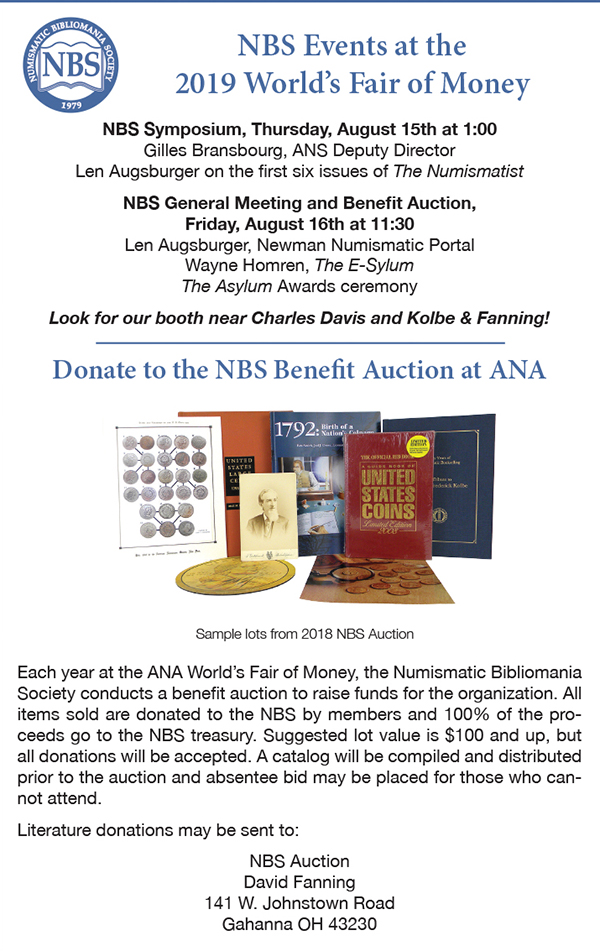
TIMELESS LESSONS FROM OLD MONEY
David Sundman forwarded this blog post on economic lessons from old coins. Thanks. These are no secrets to numismatists, but it's nice to see the topics addressed outside our field. -Editor
 Recently, I added a few coins with curious histories to my modest collection, leading to a podcast interview by my Mercatus Center
colleague and monetary expert David Beckworth on a "Monetary History of Small Coins." A few highlights of that discussion include: a Roman coin from
the reign of Diocletian (A.D. 284-305), an English groat (fourpence piece) from the reign of Henry VII (1485-1509), and several oddball American
pieces that sprang up during 19th century coin shortages.
Recently, I added a few coins with curious histories to my modest collection, leading to a podcast interview by my Mercatus Center
colleague and monetary expert David Beckworth on a "Monetary History of Small Coins." A few highlights of that discussion include: a Roman coin from
the reign of Diocletian (A.D. 284-305), an English groat (fourpence piece) from the reign of Henry VII (1485-1509), and several oddball American
pieces that sprang up during 19th century coin shortages.
Economics aside, numismatics (the study of coins and currency) has a romantic side. My Diocletian piece traveled for 1,700 years before reaching me. Who, I wonder, owned it during those centuries, and what did they buy with it?
Romance aside, fourth-century Roman coinage offers cautionary tales for 21st-century lawmakers. The value of Roman coins stemmed from their precious metal content - silver, bronze and so forth. Leading up to Diocletian, Roman authorities had debased the currency little by little by diminishing the metallic value of each coin. This way, they could use less silver, for example, to make more coins to fund the Empire. Merchants demanded more and more of the cheapened coins for their goods and services.
Like so many rulers then and now, Diocletian blamed this inflation on greedy merchants, profiteers, speculators. In A.D. 301, he issued his Edict on Maximum Prices, imposing price limits on more than 1,000 goods. Any merchants who charged more and the consumers who paid those inflated prices could both receive the death penalty. Supply and demand, however, proved mightier than Diocletian's threats. Romans largely ignored the Edict, and inflation continued.
Henry VII's groat (fourpence) represents something of the opposite story. This piece, dating from the late 1400s, was nearly identical to one first issued under Edward III (1351). Other than the monarch's name, the design and metallic content remained virtually unchanged through eight more kings, including Henry VII. Currency stability played a significant role in England's rise from a small island on the edge of civilization to history's most extensive empire. Henry VIII's "Great Debasement" was an exception, earning him, for amusing reasons, the sobriquet "Old Coppernose."
Several times in American history, small coins became scarce, leaving Americans struggling to manage small transactions. Shortages usually occurred when inflation made the metallic value of coins more valuable than the face value. During the Civil War, for example, war finance and military demand for metal made melted American coins more valuable than the denominations stamped on unmelted pieces. (Many were hidden rather than melted.)
If you were trying to get through life, your smallest change might have been a one-dollar bill - worth close to $25 in today's money. If you needed a loaf of bread or a streetcar ride, too bad. You wouldn't have the change, and neither would the baker nor the driver. A variety of alternatives to coins sprang up. Postage stamps were encased in disks and used as coins. Stores issued metal or wooden tokens promising, say, "5¢ in trade." And most curiously, privately issued Civil War tokens resembling pennies appeared, bearing patriotic slogans like "Union Forever." Civil War tokens, like today's U.S. currency, promised nothing to bearers, but were nonetheless widely accepted until they were outlawed.
To read the complete article, see:
Timeless Lessons From Old Money
(https://www.insidesources.com/timeless-lessons-from-old-money/)

LOOSE CHANGE: MAY 26, 2019
Here are some additional items in the media this week that may be of interest. -Editor
1959-D Lincoln Cent ‘Mule'
Len Augsburger pointed out this Coin World piece on a controversial 1959-D "Wheat Cent". Thanks. -Editor
 A coin that shouldn't exist - a 1959-D Lincoln cent with the Wheat reverse that was retired in 1958 rather than the Lincoln Memorial
reverse introduced in 1959 - will be offered at Ira and Larry Goldberg's June 2 Pre-Long Beach Auction in California.
A coin that shouldn't exist - a 1959-D Lincoln cent with the Wheat reverse that was retired in 1958 rather than the Lincoln Memorial
reverse introduced in 1959 - will be offered at Ira and Larry Goldberg's June 2 Pre-Long Beach Auction in California.
Both Professional Coin Grading Service and Numismatic Guaranty Corp. have given a "No Decision" grade on the mule.
The oddity was discovered in 1986 by Leon Baller, a retired police officer. When he sent the coin for authentication by the U.S. Treasury in 1987, he received a letter signed by Richard M. McDrew, special agent for the Department of the Treasury, stating, "Enclosed is your United States 1¢ coin, dated 1959-D, with wheat reverse. This coin was microscopically examined by our Forensic Services Division in Washington, D.C. and it is their opinion the coin is genuine."
To read the complete article, see:
Controversial 1959-D Lincoln cent
‘mule' heads to auction (https://www.coinworld.com/news/us-coins/2019/05/controversial-1959-d-cent-mule-heads-to-auction.all.html)
Al Newman's Penny Profits
A Bicycling magazine interview with 73-year-old Al Newman of Ann Arbor, Michigan mentioned his early involvement with numismatics. But it's the rest of the article that's fascinating - Newman spent his New Year's holiday cycling in Antarctica. -Editor
It started with a couple of coins. In 1960, the Denver Mint misprinted a batch of pennies and mistakenly sent them to Michigan, where a crafty young Newman and his brother, Chuck, wrangled up some of the copper pieces and figured out how to flip them for 10 cents each to collectors. Thanks to a well-placed ad in Numismatic News, the Newman brothers-teenagers at the time-turned a nifty profit, the equivalent of $30,000 today. And so began an entrepreneurial streak.
To read the complete article, see:
Meet the Man Taking His Retirement to the Most Remote Place on
Earth (https://www.bicycling.com/culture/a26931815/antarctic-bike-race-al-newman/)
Gold Nugget Found in Australia
Dick Hanscom forwarded this BBC News article about a hefty gold nugget recently found in Australia. Thanks. Nice find! -Editor
 An Australian man has unearthed a 1.4kg (49oz) gold nugget with a metal detector while wandering Western Australia's gold fields, say
locals.
An Australian man has unearthed a 1.4kg (49oz) gold nugget with a metal detector while wandering Western Australia's gold fields, say
locals.
A shop in Kalgoorlie shared pictures of the rock online, estimated to be worth A$100,000 (£54,000; $69,000).
The unidentified man was an experienced local hobbyist, shop owner Matt Cook, told the BBC.
Finds of this scale by prospectors are known to happen a few times a year, experts say.
To read the complete article, see:
Australian finds A$100,000 gold nugget using metal detector
(https://www.bbc.com/news/world-australia-48331769)
Ram's Horn Wire Gold Specimen Tested
Martin Kaplan forwarded this National Geographic article on a very unusual piece of gold. -Editor
 In 1887, as Colorado's gold production neared its peak, the Ground Hog mine near the town of Gilman yielded an unexpected treasure: a
ropey branch of gold that split into a trio of curling tendrils. Standing just over 4.7 inches tall and weighing roughly half a pound, the yellow
curlicues of precious metal represent the rarest form of gold ever found.
In 1887, as Colorado's gold production neared its peak, the Ground Hog mine near the town of Gilman yielded an unexpected treasure: a
ropey branch of gold that split into a trio of curling tendrils. Standing just over 4.7 inches tall and weighing roughly half a pound, the yellow
curlicues of precious metal represent the rarest form of gold ever found.
"It's truly a unique object-there's nothing even comparable to it," says John Rakovan, a mineralogist at Miami University in Ohio. This rarity, however, has a scientific down side: No one wanted to damage or cut the few known samples of wire gold to do the tests necessary to figure out how they formed. For decades, the tendrils remained a gorgeous enigma.
Now, researchers just got their first peek inside the exquisite sample, known as the Ram's Horn, with the assistance of a half-mile-long particle accelerator at Los Alamos National Laboratory. The results revealed that the bundle, which seems to be dozens of glimmering golden wires, is actually either one massive crystal or only a few crystals growing together.
To read the complete article, see:
This is the world's rarest form of
gold. New clues are revealing why. (https://www.nationalgeographic.com/science/2019/05/worlds-rarest-form-natural-gold-reveals-secrets/)
To read the Los Alamos press release, see:
World's finest gold specimen probed
with Los Alamos neutrons (https://www.lanl.gov/discover/news-release-archive/2019/February/0213-gold-specimen-neutrons.php)
Royal Mint Offers 1819 George III Sovereign
The Royal Mint recently entered the business of reselling their old products, competing in the rare coin market. Philip Mernick forwarded this article from BBC News. Thanks. -Editor
 An "extremely rare" 200-year-old gold sovereign is being sold by the Royal Mint for £100,000 - but collectors will hope their
luck is in.
An "extremely rare" 200-year-old gold sovereign is being sold by the Royal Mint for £100,000 - but collectors will hope their
luck is in.
The Royal Mint says the George III sovereign was one of 3,574 to be struck in 1819 and there are around only 10 left in the world,
It says the coin is being offered via a ballot on 12 July at the fixed price, reflecting its rarity and high quality.
The Royal Mint said the sovereign - minted in the year Queen Victoria was born - has been sourced and verified by its historic coin experts.
To read the complete article, see:
Royal Mint selling rare gold sovereign for £100,000 (https://www.bbc.com/news/uk-48392141)
Princess Diana Statue's Numismatic Connection
A statue of Princess Diana is planned for Kensington Palace, and there's a numismatic connection. -Editor
The statue's sculptor, Ian Rank-Broadley, is most recognised for his depiction of the Queen, which has appeared on all coins in the UK and Commonwealth since 1998. He also designed a gold coin marking the Queen's diamond jubilee in 2012.
Princess Diana died at the age of 36 when the car she was travelling in crashed in a Paris tunnel on August 31, 1997.
Announcing the project in 2017, William and Harry said: ‘It has been 20 years since our mother's death and the time is right to recognise her positive impact in the UK and around the world with a permanent statue.'
To read the complete article, see:
Diana statue
set to go on display at Kensington Palace to commemorate 20 years since her death is delayed as William and Harry look to 'get it right'
(https://www.dailymail.co.uk/news/article-7070649/Diana-statue-set-display-Kensington-commemorate-20-years-death-delayed.html)
FEATURED WEB PAGE: 1830-31 POLISH REVOLUTION
This week's Featured Web Page is a 2013 article on the PCGS site about the coins of the 1830-31 Polish Revolution.These coins represent Poland's tumultuous, short-lived Russo-Polish war which began with the November Uprising on November 29, 1830 and ended less than a year later, on October 5, 1831. Tragically, thousands of soldiers on both sides lost their lives.

www.pcgs.com/news/1830-31-polish-revolution-and-its-coins



